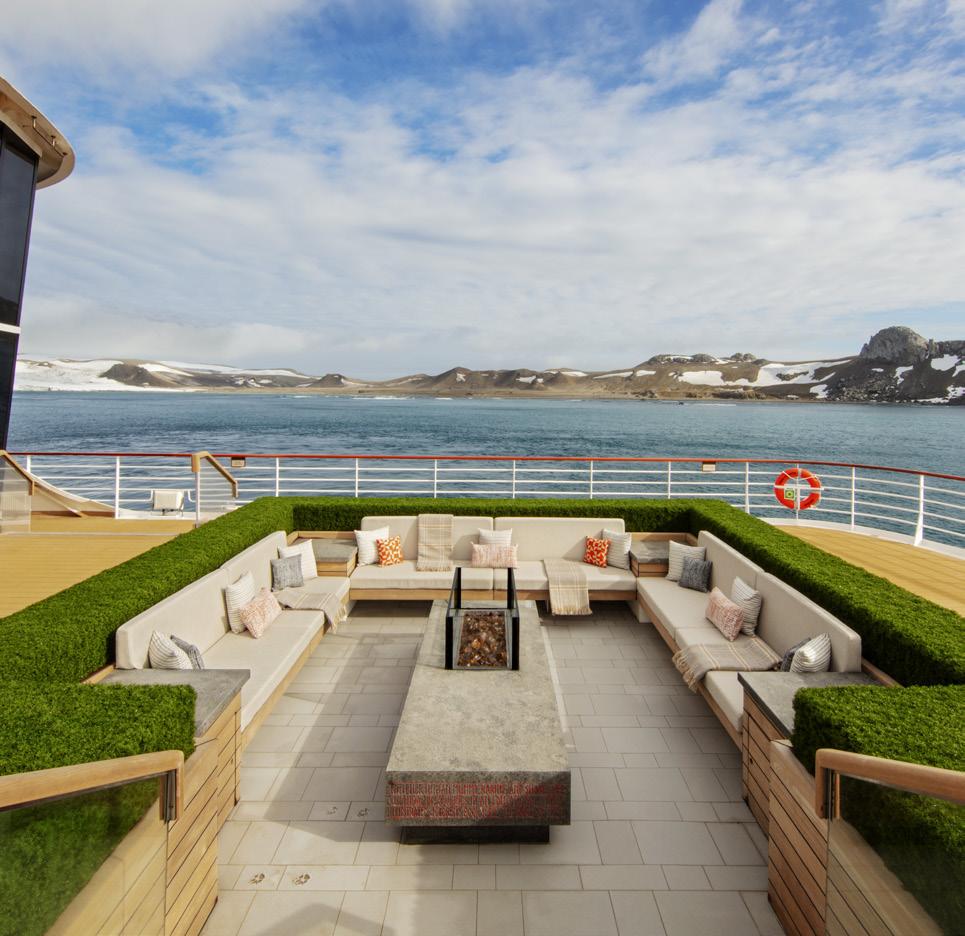EXPLORER
CULINARY EDITION
The culinary treasures of Vietnam & Cambodia

Sweet treats from around the world
Our most popular culinary experiences

The culinary treasures of Vietnam & Cambodia

Sweet treats from around the world
Our most popular culinary experiences
Viking guests across the globe are making their travel dreams a reality. Here’s some inspiration to help with your planning. Connect with Viking on social media and don’t forget to hashtag your Viking journey and share with us:
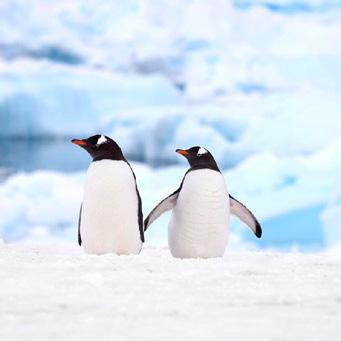
#VikingCruises #MyVikingStory
VIKING.TV
VikingAUNZ
VikingCruises


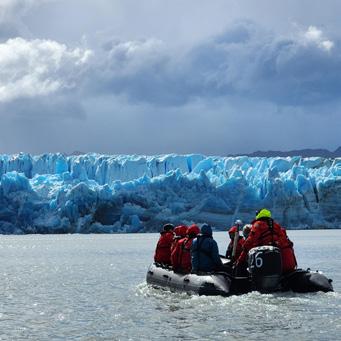

VikingRiverCruises
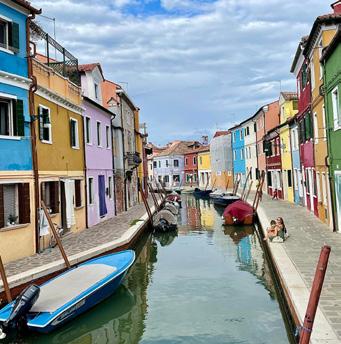
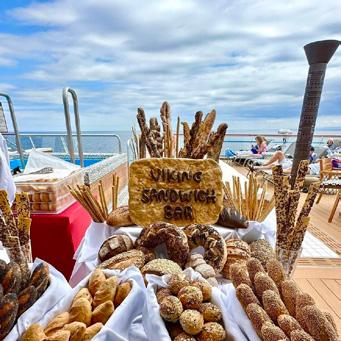

 @JEANNEWMANGLOCK
@JULIEHARTMAN
@KIMCOLYER
@MARNICPATTERSON
@TERENCEOCONNOR
@MONICAMEEKS
@WELOVEVIKINGUK3
@SHELIADAVIES_
@TANJAMILISICVILOVIC
@JEANNEWMANGLOCK
@JULIEHARTMAN
@KIMCOLYER
@MARNICPATTERSON
@TERENCEOCONNOR
@MONICAMEEKS
@WELOVEVIKINGUK3
@SHELIADAVIES_
@TANJAMILISICVILOVIC
As someone who has undoubtedly traversed the globe, you understand the profound connection between food, beverages, and travel. These elements are not merely sustenance; they are a window into culture, tradition and the local way of life. In this special culinary issue of Viking Explorer Society magazine, we invite you to embark on a culinary journey that transports your senses to some of the most exceptional gastronomic destinations across our cruise itineraries.
We believe that the heart of any travel experience lies in the flavours, aromas and experiences that linger in your memory long after your voyage has ended. Whether it's sipping exquisite wines in the vineyards of Bordeaux or indulging in freshly caught seafood on the shores of Norway, each destination we explore offers a unique tapestry of culinary treasures. But it’s not just on shore you can experience regional specialities. Our talented chefs on board our ships take immense pride in curating a diverse menu that evolves every day. Our culinary team sources the finest, locally sourced ingredients to craft dishes that reflect the culture and flavours of the destination through which you’re travelling.
Some of my favourite travel memories centre around food. I tried truffles for the first time in a small restaurant in the countryside of Florence, where they grated them in abundance on top of homemade straccetti “twisted rags”. Or the whole baked salt-encrusted fish in a little Spanish restaurant we stumbled across in Geneva – which over 30 years on, is still the best fish I’ve ever had. And I have to mention the freshly caught king crab cooked in front of me, with fresh bread, lemon and a touch of mayonnaise. This simple but oh so delicious experience was part of an excursion I did on the Into the Midnight Sun itinerary in Norway (see page 31 of this issue). On board our ships, I love the variety that Viking offers but you will tend to find me enjoying the casualness of the World Café and the wonderful sushi bar.
We hope that this issue of the Viking Explorer Society Magazine will not only awaken your palate but also inspire you to embark on new culinary experiences during your upcoming voyages with us. We look forward to sharing many more unforgettable travel experiences with you.

Bon appétit and safe travels!
Warmest regards,
We currently have a range of offers across a collection of ocean, river and expedition voyages, including up to $2,500 flight credit per couple when you book an ocean voyage before 30 November 2023
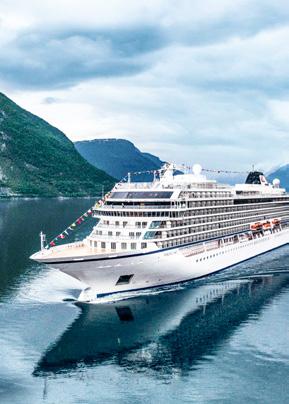
VIEW OFFERS
MICHELLE BLACK MANAGING DIRECTOR, VIKING AUSTRALIA & NEW ZEALAND

8
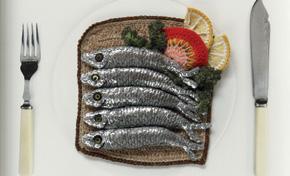
NEW IN THE WORLD OF VIKING
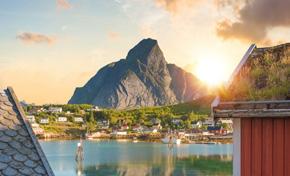
Knitted artwork on board our ships
We asked our past guests their favourite dining venues on board our ships







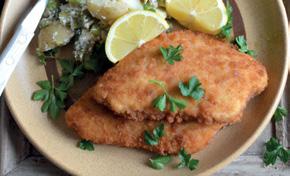
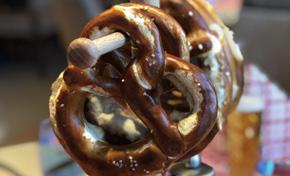
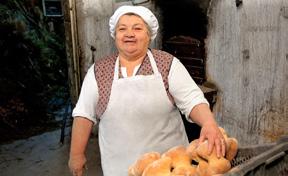
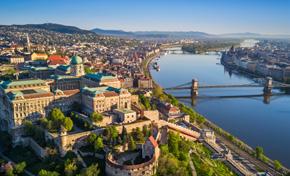
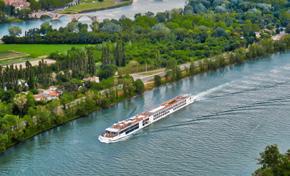

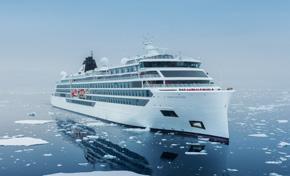

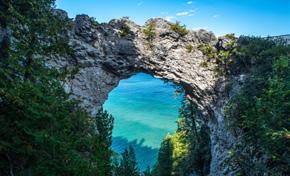
 50 TRAVEL TASTES Tasty German and Hungarian recipes to make at home
42 A TASTE FOR TRAVEL Food writer Becky Wiggins recalls the culinary highlights of a Danube cruise
58 CULINARY EXPERIENCES ON THE RIVERS
Our most popular culinary experiences along the great rivers of the world
44 EUROPE UNCORKED Wine connoisseur Bartholomew Broadbent takes a tour of the European continent’s vineyards
38 THE RIVER RHÔNE Exploring the history and culture along one of the world’s great waterways
54 FOODS OF VIETNAM & CAMBODIA
A delectable culinary journey along the Mekong River
66 WELCOME ABOARD VIKING OCTANTIS
Get to know our new state-ofthe-art expedition ships
62 SWEET TREATS
Our favourite desserts from around the world. How many have you tried?
50 TRAVEL TASTES Tasty German and Hungarian recipes to make at home
42 A TASTE FOR TRAVEL Food writer Becky Wiggins recalls the culinary highlights of a Danube cruise
58 CULINARY EXPERIENCES ON THE RIVERS
Our most popular culinary experiences along the great rivers of the world
44 EUROPE UNCORKED Wine connoisseur Bartholomew Broadbent takes a tour of the European continent’s vineyards
38 THE RIVER RHÔNE Exploring the history and culture along one of the world’s great waterways
54 FOODS OF VIETNAM & CAMBODIA
A delectable culinary journey along the Mekong River
66 WELCOME ABOARD VIKING OCTANTIS
Get to know our new state-ofthe-art expedition ships
62 SWEET TREATS
Our favourite desserts from around the world. How many have you tried?
Our popular Viking Explorer Sessions will be touring 16 regional locations across Australia this October and November.
The sessions will introduce you to cruising The Viking Way and showcase a selection of some of our most popular journeys. You'll have the chance to interact with likeminded guests and a Viking expert will be available to answer your questions and help you plan your next unforgettable journey. Plus, there will be special offers available on the day.
We've been taking well-travelled and culturally curious guests to some of the world's most captivating destinations for 26 years. In these sessions, we’ll introduce you to cruising The Viking Way, you’ll learn about the differences between our river, ocean, and expedition voyages and what life is like on board our award-winning ships. Plus, we’ll showcase a selection of our most popular itineraries from the rivers of Europe and Egypt to the Mediterranean, Scandinavia, or the pristine white continent of Antarctica.
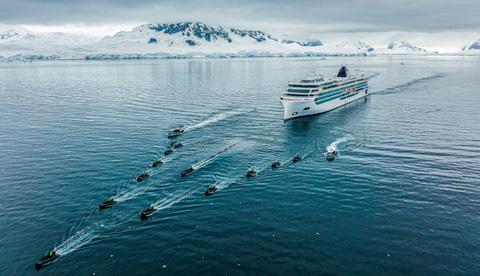
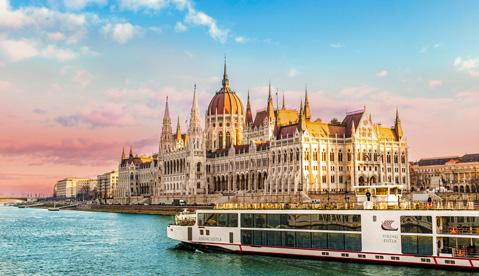
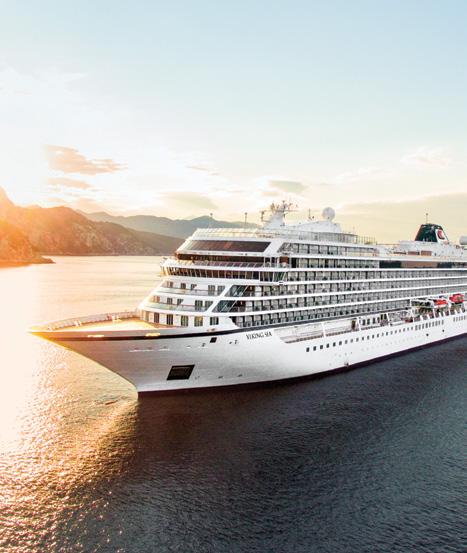
Those interested in embarking on the world’s best ocean, river or expedition voyages with no kids, no casinos, and everything you need included. Whether you’re new to cruising, an experienced cruise lover who’s never travelled with Viking, or you’ve sailed with us before and would like to discover new itineraries and destinations to explore.
The sessions will run for approximately 75 minutes and includes a presentation followed by a short question-andanswer session. A Viking expert will be on hand following the session to answer any further questions you might have.
We recommend you arrive 30 minutes prior to the start time to enjoy either complimentary morning tea or drinks and canapés plus meet some fellow like-minded travellers.
NEW SOUTH WALES
BALLINA Thursday 12 October 2023
10:30am & 6:30pm, Ramada Hotel & Suites by Wyndham
CENTRAL COAST Thursday 19 October 2023

10:30am & 6:30pm, Breakers Country Club
PORT MACQUARIE Thursday 9 November 2023
10:30am & 6:30pm, Westport Club
WOLLONGONG Thursday 9 November 2023
10:30am & 6:30pm, Grandstand Functions
GYMEA Thursday 23 November 2023
10:30am & 6:30pm, Tradies Gymea
TAMWORTH Wednesday 29 November 2023
10:30am & 6:30pm, Mercure Hotel
VICTORIA
BALLARAT Tuesday 31 October 2023
10:30am & 6:30pm, Mercure Hotel
MORNINGTON Wednesday 15 November 2023
10:30am & 6:30pm, Mornington Golf Club
GIPPSLAND Tuesday 21 November 2023
10:30am & 6:30pm, Riversleigh at Lakes Entrance
GEELONG Tuesday 28 November 2023
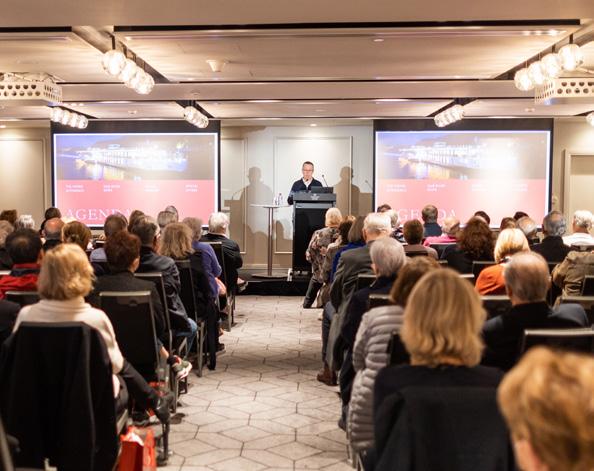
10:30am & 6:30pm, Novotel
QUEENSLAND
NOOSA Thursday 2 November 2023
10:30am & 6:30pm, Noosa Springs Golf Course
TOOWOOMBA Wednesday 8 November 2023
10:30am & 6:30pm, The Burke & Wills Hotel
BUNDABERG Tuesday 14 November 2023
10:30am & 6:30pm, Burnet Riverside Hotel
CAIRNS Thursday 30 November 2023

10:30am & 6:30pm, Crystalbrook Flynn
WESTERN AUSTRALIA
BUNBURY Tuesday 14 November 2023
10:30am & 6:30pm, BREC
TASMANIA
HOBART Thursday 16 November 2023
10:30am & 6:30pm, Movenpick Hobart
We’ve recently had a new river ship join our fleet and we’ve released a range of new itineraries taking you further and deeper into some of the world’s greatest destinations. We hope these will inspire your wanderlust.

Embark on an epic 85-day journey from Sydney to Barcelona that offers an extraordinarily diverse cultural experience as you explore the history, traditions and landscapes of 19 unique countries. Explore the underwater life of the Great Barrier Reef. Encounter the rare Komodo dragon in its natural habitat. Absorb the cultural diversity of Singapore. Sail across the Bay of Bengal and learn the secrets of Sri Lankan cuisine from a local chef. View the architectural treasures of Mumbai. Traverse the engineering marvel of the Suez Canal and stand before Egypt’s Great Pyramids of Giza. Then explore the best of the Mediterranean including the glamorous French Riviera, the Dalmatian Coast and Italy’s rustic shores.
We recently welcomed Viking Aton to the family. Together with her sister ship, the Viking Osiris, they are the newest and most elegant vessels to sail the region. Ceremonial godfather, Richard Riveire, designer of Viking’s award-winning river, ocean and expedition vessels and founding Principal of internationally acclaimed interior design firm Rottet Studio, offered a blessing of good fortune and safe sailing for the ship in a special celebration in Aswan, Egypt. Viking Aton has commenced sailing our highly popular 12-day Pharaohs & Pyramids itinerary. Starting with three nights in Cairo visiting iconic sites such as the Great Pyramids of Giza, before flying to Luxor to board the ship for an eight-day roundtrip cruise on the Nile River. Guests will enjoy Privileged Access to the tomb of Nefertari in the Valley of the Queens and the tomb of Tutankhamun in the Valley of the Kings. Excursions include the Temple of Khnum in Esna, the temples at Abu Simbel in Aswan, and a visit to a colourful Nubian village. We are also pleased to announce our 2026 Egypt season is now open for sale.

Witness the majestic landscapes of the ice-swept Antarctic Peninsula teeming with penguins, seals, whales and other wildlife. Observe wildlife including the King Penguin on South Georgia Island. Sail the vast coastline of the Americas, from Ushuaia, “the City at the End of the World,” to the pristine Great Lakes of North America, the world’s largest freshwater system. Admire the striking beauty of the Chilean Fjords and marvel at the engineering ingenuity of the Panama Canal. Choose from a selection of optional overland excursions to mystical Machu Picchu and see the rare and diverse wildlife of the Galápagos. Set sail on a voyage to remember and enjoy a host of additional bonus inclusions.
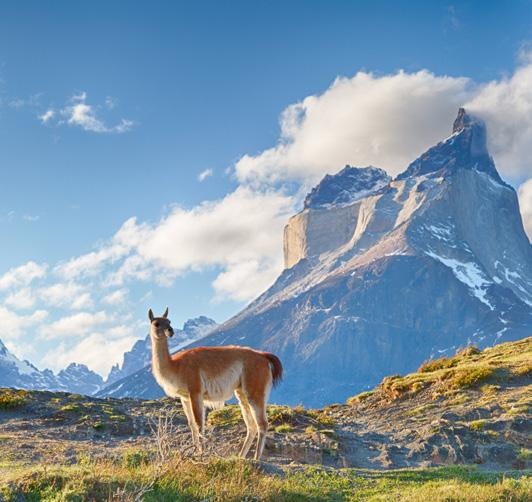
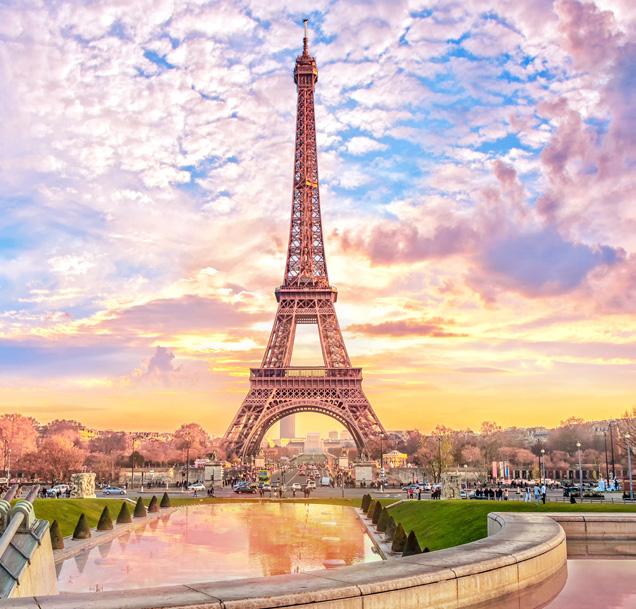
Begin your journey in London with a visit to historic World War II sites—including the Churchill War Rooms, Bletchley Park and the Imperial War Museum. Then continue to Paris for your voyage along the Seine. Sail through Normandy, visit D-Day sites including the Pegasus Memorial Museum and walk the hallowed ground at Normandy’s Commonwealth Cemetery and World War II beaches. Sailing from March through to November 2025, book now to secure your preferred stateroom and departure date. Book by 30 November 2023 and save up to $2,000 per couple.

Our new world cruise collection showcases a range of itineraries from 62 to 180 days on either our award-winning small ocean ships or our state-of-the-art expedition vessels. Our traditional ocean world cruises traverse the globe visiting 37 countries across six continents. While our expedition world cruises travel longitudinally north to south from North America to the pristine white continent of Antarctica or vice versa.
View online at viking.com


Full disclosure. I am a massive Viking fan, and asking me to write about a Viking cruise is guaranteed to make me go full Jane McDonald and use far too many superlatives; fabulous, amazing, fabulous, wonderful, great, fabulous – all are synonymous with any Viking cruise, but unlike Jane, I’ll try to restrain myself.
That the cruise was going to be excellent was a given, what I wasn’t expecting was the surprises. It all began in Bergen, which it turns out is a mighty and important Norwegian city, has a
storied history, ancient wooden buildings, is the home to the Viking ocean fleet, and was once part of the Hanseatic League. Basically a medieval version of the EU.
After a whole day in Bergen and being the perfect passenger – you know the sort of thing, looking for a classy fridge magnet, going up and down a mountain, trying to buy a hand-stitched Norwegian flag for less than 500 euros (impossible), and eating my bodyweight in cinnamon buns, drinks, dinner and lively chat – I was ready for bed by about 9.30pm. I headed to my stateroom, got into
my pyjamas and went to bed, ready to sleep.
Sleep, what was I thinking of ? I was in the land of the midnight sun. It may have been almost midnight but it was practically still afternoon outside. I know I could have closed the curtains but we were passing savagely beautiful islands whose Thor-like presence would have been rude to ignore. These magnificent monoliths backlit by the sun were mesmerising. Kilometre after kilometre, despite the simple repetition of sea and austere islands, I couldn’t tear myself away.
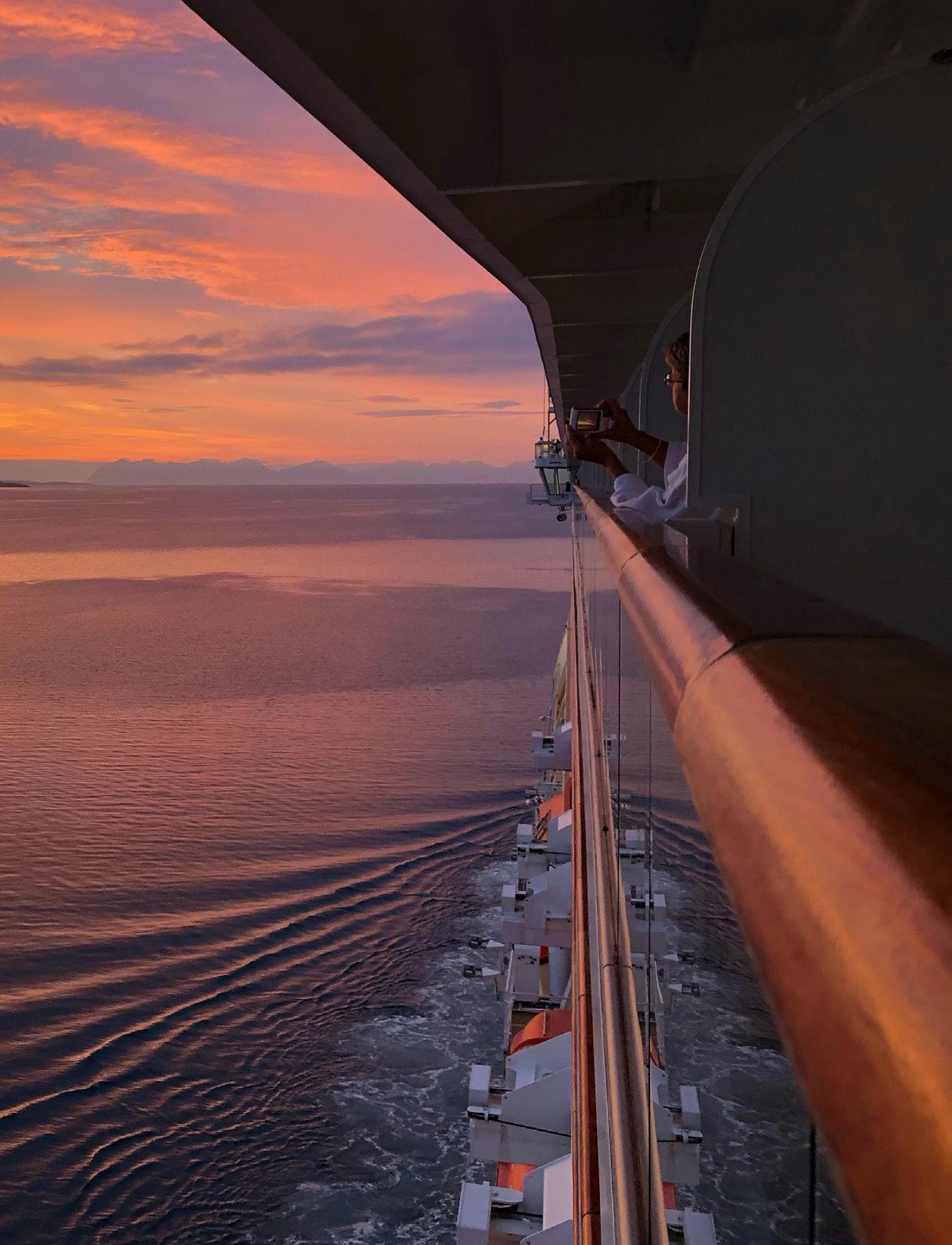

There was nuance in the shapes, the birds that clustered on and around them, the sparse flora and fauna nestling in nooks and clinging to crannies, the way the sunlight reflected in the deep, dark water made every second thrillingly different and created a hunger for the next moment of magic. I think I finally fell asleep at about 3.30am. The midnight sun is one of those things people can tell you about until they, or you, are blue in the face. You need to see it to believe it and I can pretty much guarantee you’ll be as surprised and seduced as I was.
After that the surprises came thick and fast. So thick and fast in fact, I nearly missed the second one.
Breakfast, 7.30am, Day Two. The important bit here is ‘Day Two’. Late night island spotting is exhausting, but nothing comes in the way of breakfast, and breakfast in the Viking World Café is just the best. I was steaming full speed ahead past reception and heading for the eggs benedict when I realised the smiling Maitre d’ had said ‘Good Morning Miss Cotter Craig’. Hang on a minute, I had only been on board for just over 24 hours, there were 900 people on the Viking Sea, and yet he was able to greet me, and every passenger who came in to breakfast by name.
As the cruise continued I discovered this was standard with so many of the staff – the stateroom stewards, the security team who waved us on and off the ship, the shore staff, the waiters and waitresses, the ladies in the spa – everywhere. Now that’s a surprise like a warm hug.
Next, Geirangerfjord. To be honest I had been a bit sceptical about the fjord part of this cruise, I’m
The first thing that took my breath away were the farm houses precariously positioned hundreds of metres atop fortress-like walls rising from who knows what depths, and accessible only by narrow vertical tracks. That’s bad enough, but if you were a small child or animal there was a pulley and basket combo to hoist you from sea level to the top. Extraordinary.
However if anyone had asked me what sort of things I’d expect to find growing there (unlikely, but stick with me) I would have said; carrots, potatoes, peas, beans, maybe the odd turnip, but almost certainly not apricots. But grow there they do. Geirangerfjord is 62 degrees north and only a few hundred miles south of the Arctic Circle, and here the most delicious and northerly apricots in the world thrive and grow. Arctic apricots? Yes please. I really did need a little lie down after all this overwhelm and it still wasn’t 9.00am. Then we got off the ship and went for a very Norwegian hike, I say very Norwegian because it involved walking up some incredibly steep hills quite fast.

Clockwise, from left: Lupins growing in the Nordic countryside; the picturesque fishing village of Honningsvåg; Fi was surprised to discover apricots grow so close to the Arctic Circle


Scottish, I live on the shores of Loch Linnhe, have swum in Loch Ness and have even taken a boat out on Loch Lomond, so what on earth could a fjord offer that my beloved Scottish lochs didn’t? Quite a lot it turned out.
There was just something so intriguing about Geiranger that a bit like the adventurous schoolgirls in Picnic at Hanging Rock we felt the urge to walk higher and higher, but mercifully without the disastrous consequences that befell them.
You need to see the midnight sun to believe it and I can guarantee you’ll be as surprised and seduced as I was

The higher we went the more impossibly bucolic it became, from flower meadows brimming with welcoming cheeriness to untrimmed billowing hedges, the smell of summer grass, the rush of mountain streams, small vertiginous fields bursting with multi-coloured wildflowers; campions, Arctic cotton, buttercups, cornflowers, saxifrage, sedums and poppies. If all that hadn’t been enough, the sudden appearance of a pack of llamas and a herd of bell-ringing goats on the track in front of us just seemed normal for Norway. In retrospect they were just another wonderful surprise in one of the most beautiful and individual countries in the world.
Every day the surprises came when you least expected them, like a chain of beautiful bridges in the Arctic Sea linking one remote tiny island with a handful of humans and some sheep to another tiny and remote island with a handful of humans and some sheep. I am positive that if you could look down on it from space they would create a linking pattern as beautiful as the DNA helix.
In every port we had the joy of experiencing the seductive attraction of a new place; the smells,
the prices, unfathomable things in shops, hummus as a snack for customers in a high end clothes shop, confident Scandinavian friendliness, unheard of brands of confectionery, ancient paving stones, the odd tram rattling politely past or the terrifying ski jump high above TromsØ, a town inside the Arctic Circle at the top of the world and the middle of nowhere. Norway was both just like home and like nowhere else.
Other surprise highlights? Being beaten by birch twigs in the spa (really, try it!), eating king crab fresh from the sea and cooked in a yurt, huge rapacious sea eagles being attacked by furious, tiny terns in the Lofotens. Shetland, part of Scotland, but with an ancient Norwegian soul, the lush treeless greenness of Orkney and the standing stones that made me stand and weep. All never to be forgotten and just when I thought none of these could be beaten – they were. Like all great hosts Viking saved the best surprise til last.
The last night of a cruise is always a bittersweet affair, not only is there the sadness of it being over, and goodbyes to be said, but far, far worse – the horror of packing.
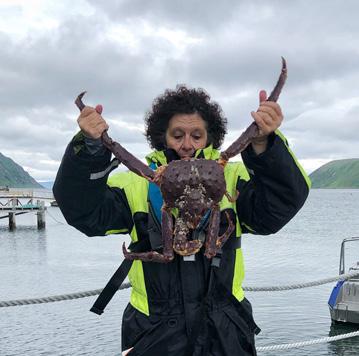
Bergen or vice versa, starts from $11,495pp in Veranda stateroom.

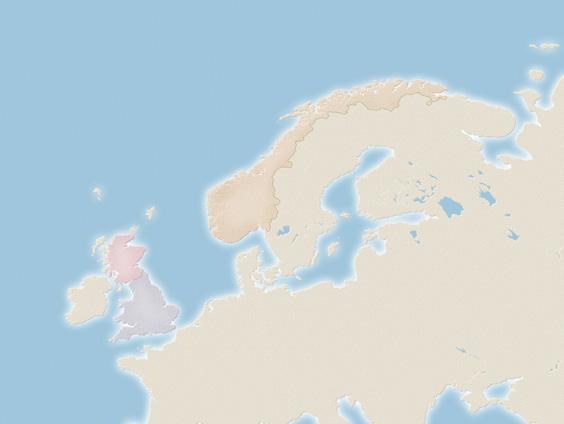

 Four part series on Into The Midnight Sun
Clockwise, from left: One of the bridges linking isolated islands; Fi meets a Giant Crab; the Arctic Cathedral in Tromsø
Four part series on Into The Midnight Sun
Clockwise, from left: One of the bridges linking isolated islands; Fi meets a Giant Crab; the Arctic Cathedral in Tromsø
One of Norway’s most iconic drinks is circumnavigating the globe, and it is all in the name of good taste
Ever since the 1500s, Scandinavian Aquavit has captured the purity of wild Nordic beauty in a bottle. In its cleanest form, it is a neutral, flavourless spirit distilled from grain or potato, but infusions of botanicals such as caraway, dill, anise, fennel, coriander or cardamom transform it into a pleasing elixir. It has long been believed that the spirit is best matured in casks amid the motion and temperature changes of a sea voyage.
Viking has celebrated the heritage of aquavit for many years; we even
named our shipboard al fresco terrace after it. Now, accompanying us on board, we are proud to have six casks of our very own Viking Aquavit, a distinctive recipe first made in Bergen in 1818.
It began its journey in Norway’s Atlungstad Distillery. There, it spent six months soaking and taking on sweet notes in smooth Spanish oloroso sherry casks. For its ocean voyage, it was transferred to American white oak casks, where subtle vanilla and caramel flavours enhanced its profile. After crossing many meridians and parallels, as
well as the world’s legendary waterways, Viking Aquavit ended its long journey to perfection in Bergen. In keeping with the tradition of our forebears, it will have crossed over 360 degrees of longitude and circumnavigated the globe.
Why not visit the onboard Aquavit Terrace and raise a glass to this journeying spirit?
Aquavit: A Taste of Norway
 Above: The honeycoloured spirit is infused with botanicals
Above: The honeycoloured spirit is infused with botanicals
Tea picking at the Tregothnan Estate in Cornwall
WORDS & FOOD PHOTOGRAPHY KAREN BURNS-BOOTH
After an invigorating walk up steep but bucolic country lanes, winding past beehives and over wooden stiles, we came to the most beautiful view of Cornwall's River Fal. We had arrived at the tea terraces on England's first ever Tea Estate.


Tregothnan Estate is near Falmouth in Cornwall, and I was lucky enough to be on an included excursion when sailing on the Viking Venus. Here we walked amongst wildflower meadows, ancient orchards and grassy countryside tracks. Harvesting Britain’s first home-grown English tea in 2005, and thus creating the ultimate Britishness in every cup, it has certainly become a must-visit on every tourist’s list.
around the tea includes the famous pink Magnolia Campbellii that was introduced from Darjeeling and often heralds the spring in Cornwall before it arrives in Darjeeling.
I’ve been tea plucking in Sri Lanka, but I never thought I’d be lucky enough to go tea plucking in England and as I wandered up and down the terraces, I kept looking over to the River Fal, as it snaked its way through the nearby valley.

The sun glinted on the shimmering water, soft clouds were buffeted along by a gentle summer breeze, and it was hard to believe that I wasn’t back in Sri Lanka harvesting tea with the local tea pickers there.
Karen Burns-Booth is a freelance food and travel writer, as well as a food stylist, and recipe developer. Originally from South Africa, she now lives on the edge of Snowdonia National Park, UK.

16 years on, and over 20,000 tea bushes are planted every year in this new English tea garden, which is wholly suited to the local Cornwall microclimate. It’s a fascinating sight to see rows and rows of tea bushes, something that we may normally associate with Ceylon, India or Kenya. I was intrigued to learn that the flora
After our walk we all enjoyed a cup of Tregothnan Afternoon Tea with homemade shortbread biscuits, taken in the small but perfectly charming tea garden. For a tea addict like me, and as a recipe writer and recipe creator, this was one of the highlights of my cruise whilst on Viking Venus. The trip even inspired me to create new recipes using this iconic British ingredient!
This delicious fruit loaf is made with yeast and saffron and tea-infused fruit. It’s based on the famous Cornish Saffron Cake, but with tea and not milk being used as the liquid ingredient. Serve this in thick slices with Cornish butter and a cuppa; it’s also delectable when toasted and served with cheese.

Makes: 8 to 10 slices
Prep: 2 1/2 hours
Bake: 30 minutes
1/4 teaspoon saffron threads
150ml freshly brewed tea (I used Tregothnan
English breakfast tea)
1/2 teaspoon salt
60g caster sugar
1/2 teaspoon mixed spice
450g plain white flour
120g softened butter
115g mixed dried fruit
7g sachet fast action dried yeast
1. Add the saffron threads to the warm or tepid freshly brewed tea and set aside.
2. Sift sugar and salt into the flour and rub in the softened butter. Add fruit and mix well.
3. Add the dried yeast and then the saffron tea mixture. Mix well with a wooden spoon and then tip the dough out onto a well-floured board and knead with your hands until you have a soft, smooth ball of dough.
4. Place the dough into a lightly buttered bowl, cover and set aside in a warm place to rise for 1 1/2 hours, or until the dough has almost doubled in size.
5. Knead into a loaf shape and place into a well greased loaf tin. Cover and allow to rise again for 30 minutes.
6. Preheat oven to 200C/180C Fan/400F.
7. Bake in preheated oven for 30 minutes, or until the loaf is well risen.
8. Leave to cool. Serve in slices with butter.
These delightful scones are infused with Earl Grey tea, which imparts a wonderful bergamot flavour to them. The dried fruit is also soaked in hot Earl Grey tea adding an extra layer of citrusy and floral flavours, as well as making the fruit extra plump. Serve these scones with butter and jam, or with clotted cream for a proper Cornish cream tea. (Don’t forget it’s jam first in Cornwall too!)
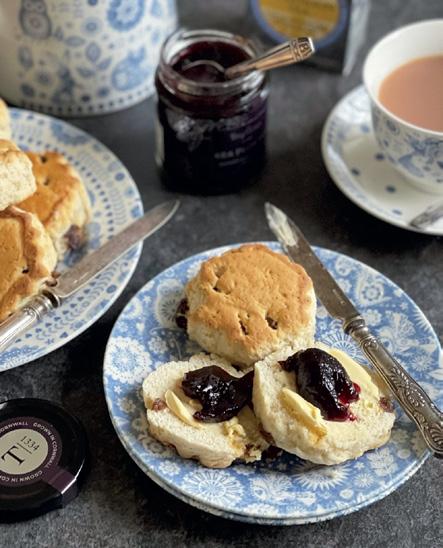
Makes: 10 scones
Prep: 30 minutes
Bake: 15 minutes
150ml buttermilk
4 Earl Grey tea bags
(I used Tregothnan Earl Grey tea bags)
75g dried mixed fruit
375g self raising flour
2 teaspoons baking powder
75g cold butter, cut into small pieces
75g caster sugar
2 eggs
1. Bring the milk to a boil in a saucepan and add the teabags and dried fruit. Take off the heat and allow it to infuse until the milk is cold. Once cold, remove the dried fruit with a sieve and set to one side.
2. Preheat the oven to 220C/200C Fan/425F.
3. Put the flour and baking powder in a large bowl and add the butter. Using your fingertips, rub the butter into the flour until it resembles fine breadcrumbs. Add the sugar and stir in.
4. Whisk the eggs with the cooled Earl Grey milk, then add this to the flour with the soaked dried fruit. Mix until it comes together to form a soft dough.
5. Lightly flour your work surface and tip the dough on to the surface.
6. Roll out the dough to a thickness of 3cm and cut out your scones using a fluted scone cutter.
7. Place the scones on a baking tray lined with greaseproof paper.
8. Glaze the tops with a little milk using a pastry brush and bake in the oven for 15 minutes, or until well risen and golden brown.
9. Leave to cool before serving with butter, jam and cream.
I have lived and travelled all over the world and in my book I have shared some of my favourite recipes, experiences, and memories.

and Abroad is based on Karen Burns-Booth's eponymous award-winning blog.
“It’s hard to believe that my first solo book was published nearly five years ago. It’s part travel diary, part memoir, part history and all cookbook,” says Karen of the cooking companion containing 160 unique recipes. It showcases the breadth and depth of her travels, including many Viking cruises. “I have been fortunate enough to have lived and travelled all over the world and in my book I have shared some of my favourite recipes, experiences, and memories.”
From breakfast, preserves and soups to vegetarian meals and home-baking, the book offers fascinating historical facts about many of the recipe’s origins. “I was thrilled when one of my travelling culinary heroines, Josceline Dimbleby, said ‘this book has everything. A real treasure trove!’”
Karen’s travel cookbook book is now available from Amazon and from lavenderandlovage.com
This fabulous recipe makes enough salmon for eight people. You can infuse the salmon for up to two days, but you’ll also get a wonderfully mellow tea flavour with a quick cure for 12hrs. Serve this Gravlax salmon as part of an elegant afternoon tea with lemon wedges and sourdough crackers. It makes wonderful tea sandwiches too.
Serves: 8 people as a starter Prep: 12hrs 20 minutes
650g fresh salmon, skin on 150g sea salt
75g caster sugar
45g loose Earl Grey tea (I used Tregothnan Earl Grey tea) Bunch of fresh dill, finely diced (optional) Zest and juice of 1 lemon
1. Line a large roasting tin with a double layer of cling film.
2. Make the “cure” mixture by mixing the salt, sugar, tea, dill, zest and juice together.
3. Spoon half of the cure mixture into the lined tin, and lay the salmon on skin side down.
4. Spoon the remaining cure mixture over the salmon and then wrap the salmon very tightly in the cling film. Sit another baking or roasting tin on top, add a few tins of food or weights to weigh it down and leave in a cool place or the fridge for 12hrs or up to 2 days.
5. When you’re ready to serve the salmon, unwrap it and rinse off the cure with cold water.
6. Slice the salmon very thinly from the skin. If you have time, you can freeze it for a few hours and it will be easier to cut.
7. Serve with fresh lemon wedges and sourdough crackers.


Bergen
| 3 COUNTRIES
5 GUIDED TOURS
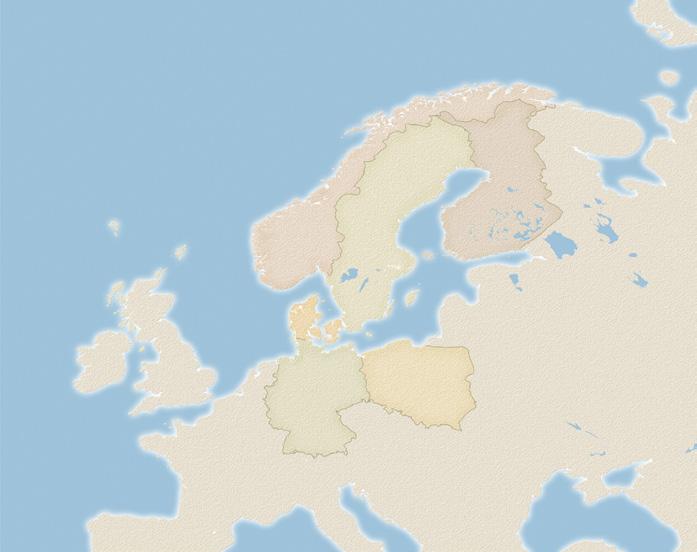

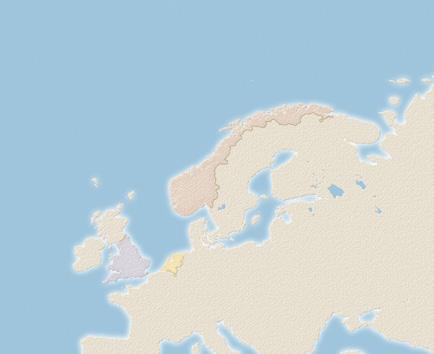
EXPLORER
Bergen to London or vice versa
15 DAYS | 6 COUNTRIES
12 GUIDED TOURS
SET SAIL: APR–SEP 2024; MAR–SEP 2025

From $11,095pp in Veranda Stateroom
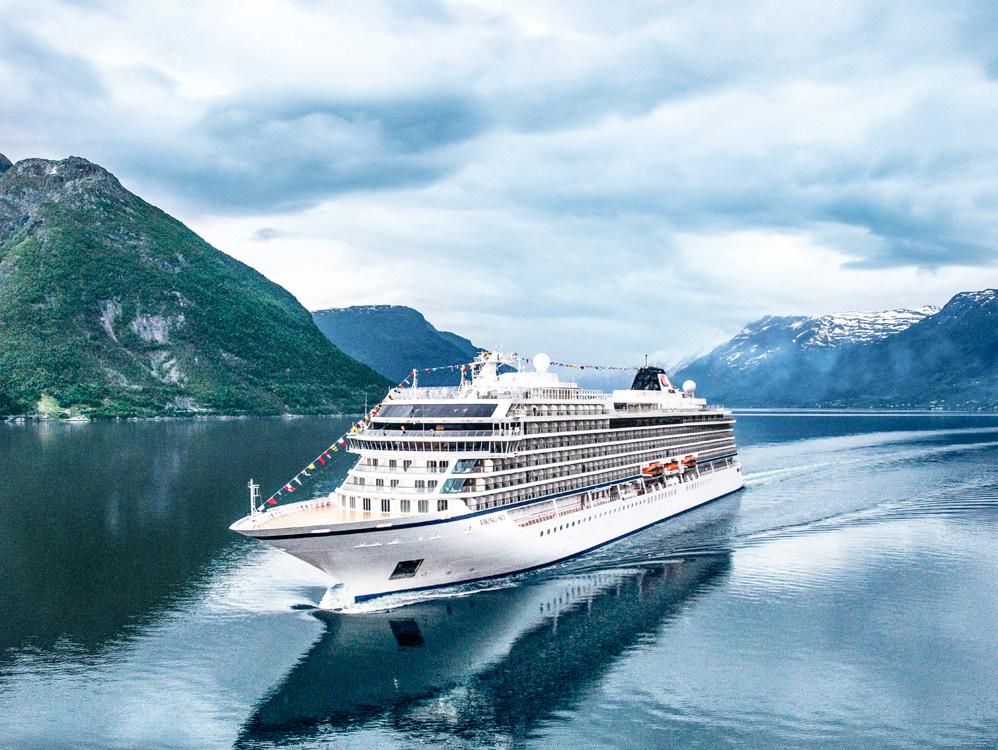
From $13,495pp in Penthouse Veranda
ICONIC
9 GUIDED TOURS
JUN, AUG–SEP 2024; MAY–AUG 2025 in Veranda Stateroom in Penthouse Veranda
Conditions apply. Prices are per person, in Australian dollars, based on double occupancy, subject to availability, include all advertised discounts, and are correct at the time of printing. A partially refundable deposit is required at the time of booking. In Search of the Northern Lights based on 22 January 2025 departure. British Isles Explorer based on 23 March 2025 departure. Viking Homelands based on 28 April 2025 departure. Iconic Iceland, Greenland & Canada based on 18 May 2025 departure. Included flight credits are to be used towards flights booked by Viking and from major gateway cities in Australia and New Zealand. Should the applicable airfare be higher than the value of the Included Flight Credit, guests are required to pay the difference. Any unused portion of the Included Flight Credit is forfeited and cannot be transferred towards any other portion of the booking or any other person. Flights are subject to availability. Flight offers are only valid if booked with selected Viking Ocean cruises. For Ocean Cruise bookings made online, please enter offer code OC12 to obtain the $2,500 flight credit per couple. All offers are only valid on new bookings made between 01 September and 30 November 2023 unless sold out prior. For full terms and conditions including flexible deposit and flight credit offers visit viking.com.
ICELAND,

New York City to Bergen
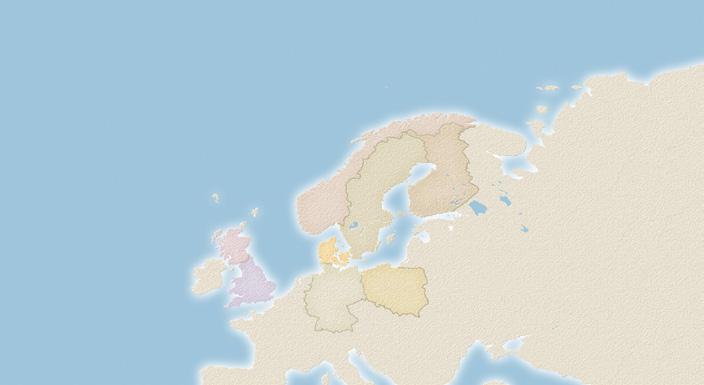
MAY–JUN,
person. Flights are subject to availability. Flight offers are only valid if booked in conjunction with selected Viking Ocean cruises. For Ocean Cruise bookings made online, please enter offer code OC12 to obtain the $2,500 flight credit per couple. All offers are only valid on new bookings made between 01 September and 30 November 2023 unless sold out prior. For full terms and conditions including flexible deposit and flight credit offers visit viking.com.
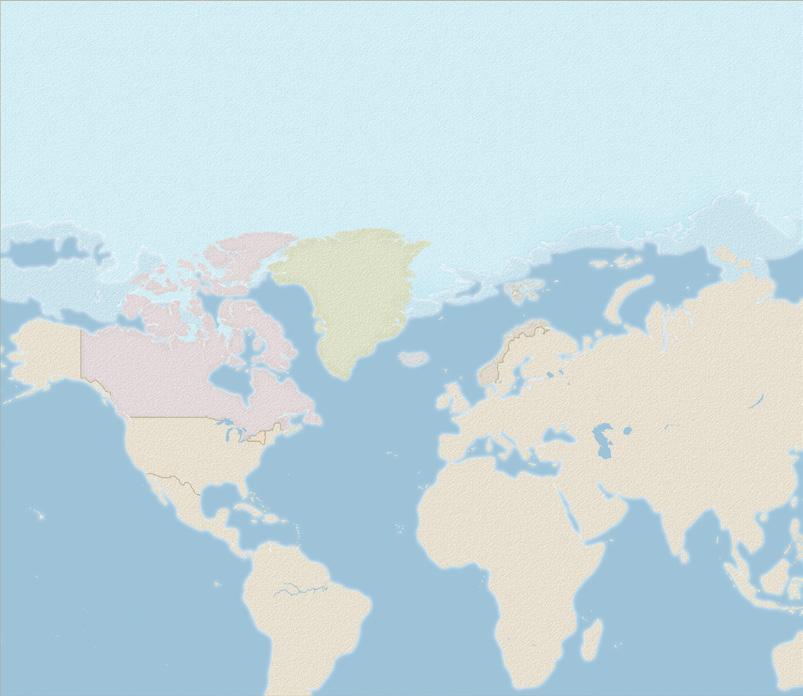
More than simple refreshments, each sip is a gateway to the histories, rituals, and stories that have shaped human experience across continents
Crafted with a fusion of terroir and mastery, Saône Wines represent the centuries-old winemaking culture of Lyon. Spanning kilometres along the Saône, vineyards thrive in the granite-rich soils and a nurturing climate, yielding grapes that birth a delicate palate. Indulge in the perfect balance of sour, sweet and bitter. Elevate your experience with local chèvre, cured meats, pâté croute and terrine.
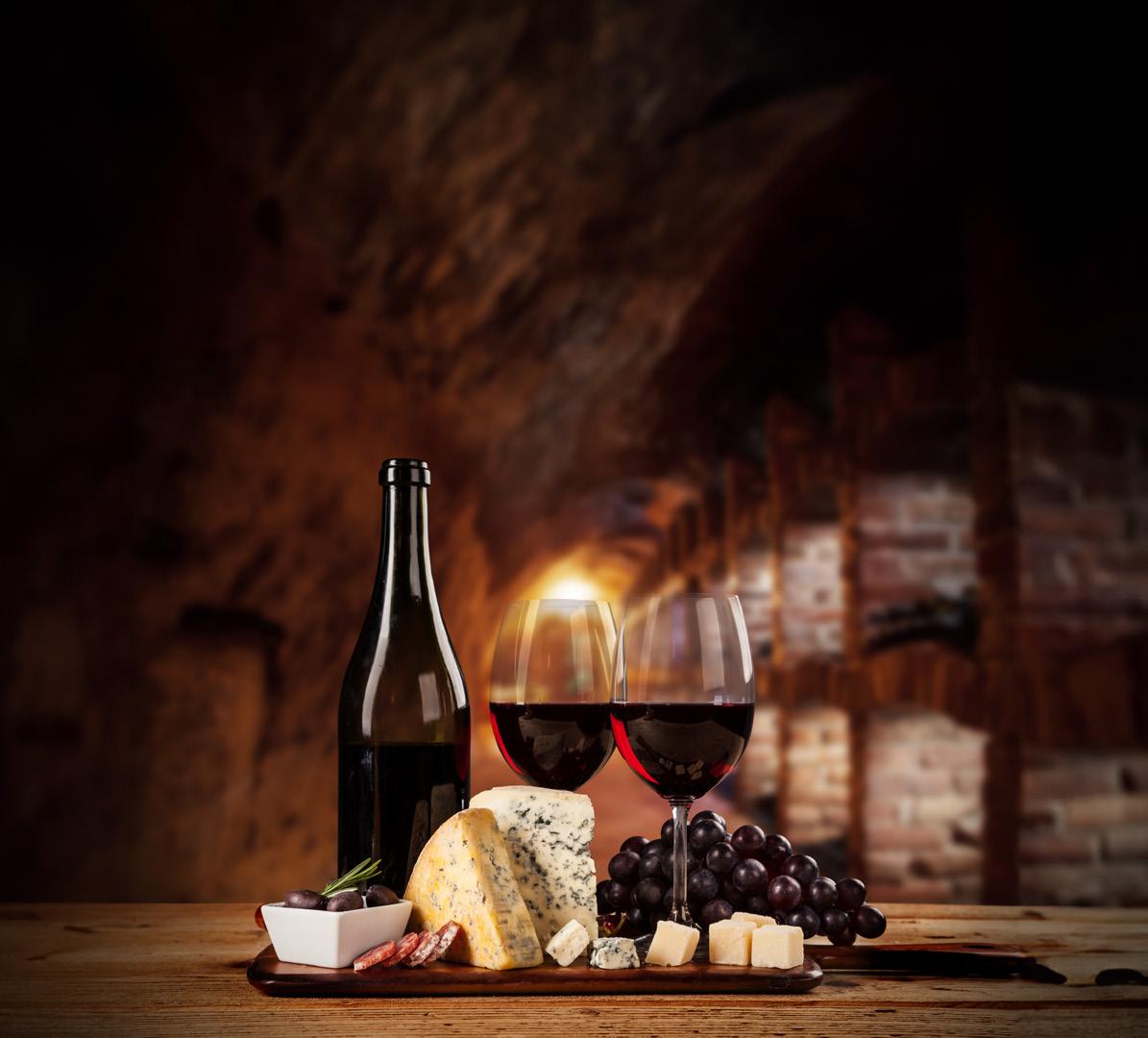
Norway's revered national spirit, Aquavit, encapsulates the essence of Vikings homeland. With a name that translates to "water of life," Aquavit is a caraway-infused vodka, distilled from grain and potato. Traditionally enjoyed as a refreshing interlude between bites of ribbe, this beverage is celebrated for its cultural significance.
A timeless emblem of Japanese tradition, Sake, encapsulates a world of taste and culture in every drop. Created from polished rice and pure water, whether sipped warmly or chilled, its flavours unfurl, encompassing floral, fruity, earthy, and robust tones. Rooted in centuries of craftsmanship, sake harmonises seamlessly with the art of Japanese cuisine and stands as a symbol of refined delight.
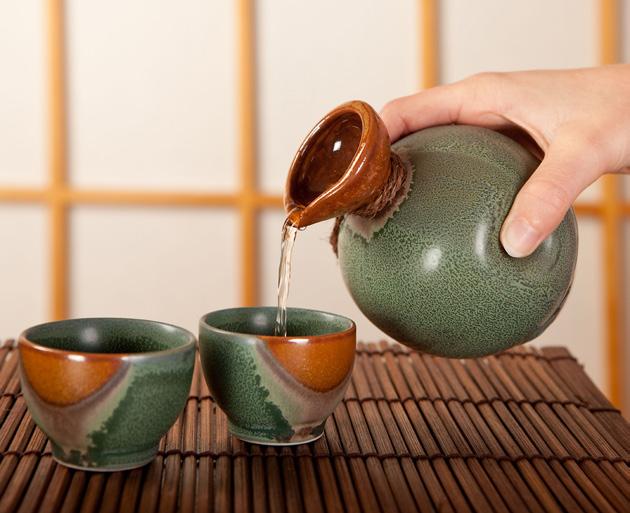
Indulge in the warmth of Viennese Hot Chocolate. Hailing from Austria's heart, this velvety elixir is a symphony of rich cocoa, milk, and a hint of vanilla. Every sip is a journey to Vienna's charming café s, where culture and comfort intertwine. Topped with decadent whipped cream and a dusting of cocoa, it's a delightful embrace of winter's cosiness.

Harvested from the lush plains of India, this traditional tea boasts a malty, earthy, and spicy flavour profile that ignites the senses. With its rich amber hue and strong taste, Assam tea seamlessly accompanies morning rituals or afternoon leisure. Whether enjoyed on its own or with a splash of milk, each cup is an invitation to explore the rich heritage and captivating allure of one of the world's most celebrated teas.

British artist Kate Jenkins’ knitted artwork is a firm favourite on Viking ships. She tells writer Kate Finney more about her food-inspired creations.

How did you start knitting food?
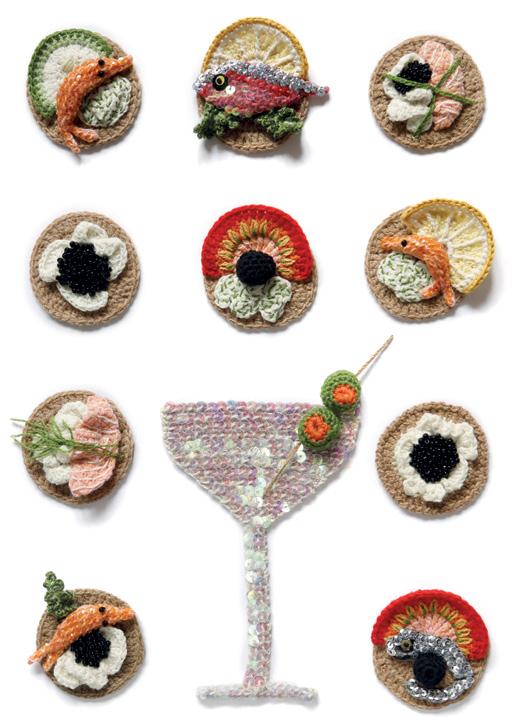

I was actually making fashion accessories when I decided to knit a full English breakfast and people loved it so much. I found I was good at making things look realistic. In essence, I wanted to stand out and grab people’s attention, and it has ended up taking me down a whole new and exciting career path.
What is your biggest creation?
I knitted an entire fish counter from scratch once—it was massive. I had the idea in my head and visited lots of different fish markets all over the world. I went to markets in Tokyo, in Copenhagen and Billingsgate in London to get inspiration. It was an interactive exhibition so I was dressed as a fishmonger, and people could come to buy a piece from the fish counter, which we would then frame on a plate. I made lobster, mussels, cockles, salmon, flat fish, plaice, kippers—everything you would usually see. It looked so real that people were really doing a double take. At the other end of the scale, tins of sardines are popular, and sushi, too. I have made lots of Scandinavian open sandwiches featuring lots of prawns. It takes about an hour to knit a prawn or a sardine, and then I embellish them with sequins and beads.
How did your partnership with Viking come about?
The company got in touch with me after seeing my work in a gallery on Charlotte Street in London. It took a year or two to get the go-ahead, but my work is now featured on their ships. I love that my work is floating around the world and that people are eating their breakfast looking at crocheted versions of their food. So many people commission me after seeing my work on board, so it has been a really interesting collaboration. One Viking customer from New York commissioned me to make a crocheted, hand-embroidered mahjong set of playing tiles for his wife for Valentine’s Day. I had never done them before, but I loved it.
You love to travel, but how do your trips inspire your work?
I am always looking for places to source sequins—India is amazing for that. I cannot even begin to guess how many different sequins I have used. I have a huge range of metallic, opalescent and iridescent sequins for fish scales. And so much yarn as well. Japan is best for beads—the caviar I create for my canapés is made from black beads from Japan, and I also have the perfect beads to make a pinky-red fish roe.
What kind of food inspires you most?
I am vegetarian but I have not stopped making fish. I am obsessed with vegetables and cheese; I cannot stop thinking about how to make feta look interesting. It probably needs a Greek salad.
How did you learn to knit so well?
My mum and my grandmother were always knitting and making things for me and my sister when I was growing up. We lived in the Rhymney Valley in South Wales and were always encouraged to make things, even as children.
What are you working on at the moment?
I am making crab and chilli linguine, a bouillabaisse that I have renamed “woolabaisse,” a lobster bisque, cocktails and canapés, seafood spaghetti and a Scandinavian open sandwich. Last year, I created a range of Christmas decorations for the fashion and homewares store Anthropologie. I made a “fishmas tree” as well as a lobster holding mistletoe in his pincers, and a skewer of prawns which I called We Three King Prawns. I am now working on my next exhibition in New York. I will be creating a knitted and crocheted New York record store.
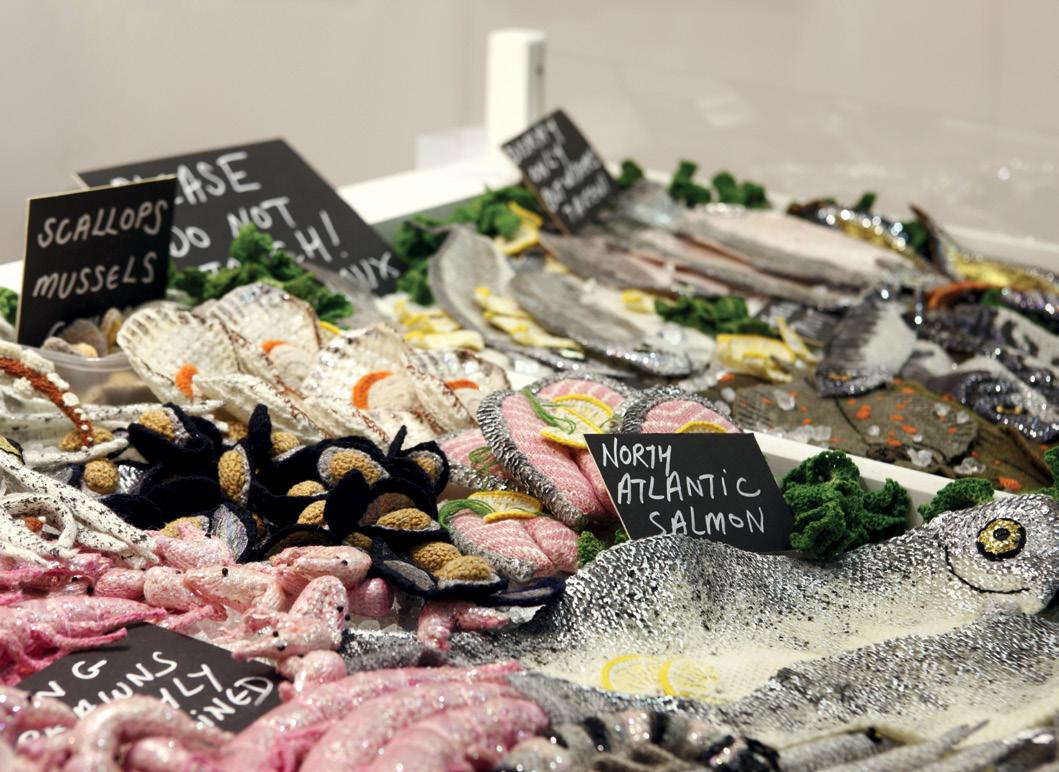
I really love these random requests because they take me out of my comfort zone and allow me to try something new. For example, I have been embroidering muscles for a ski company. It is designed to illustrate the different parts of the body you use while you are skiing, as a fun feature for visitors.
Do you prefer to cook your food or crochet it?
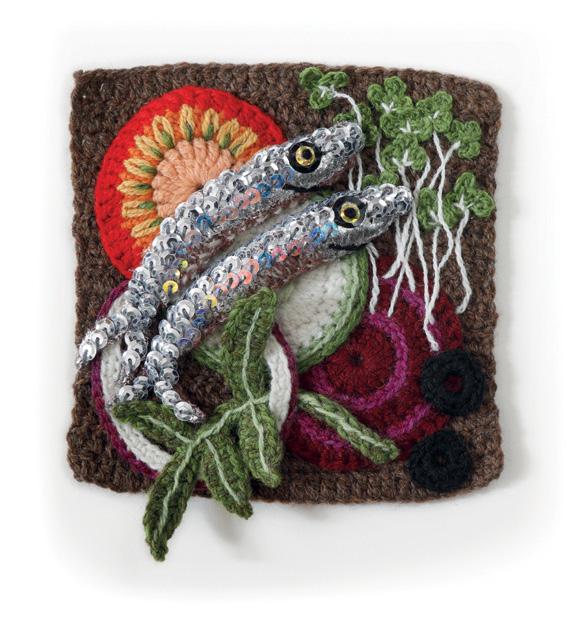
I love food and I really enjoy cooking, but I think I actually prefer knitting it rather than cooking it. Cooking always seems so very time-consuming in comparison to knitting. But I guess they are both a labour of love.
katejenkinsstudio.co.uk
See Kate’s work on board all Viking ocean ships.

Explore the world through a gastronomic lens on your next Viking Ocean voyage. From exclusive market-to-table experiences in captivating cities to whisky tastings in Scotland and hands-on cooking classes in Tuscany, our optional curated culinary excursions promise to indulge your senses and enrich your travel memories.
Prepare for an exhilarating maritime adventure that delves deep into the soul of Norwegian seafaring heritage and as you harvest an Arctic giant from the sea. On this journey, you'll quickly come to appreciate the profound connection Norwegians have with the sea. Venture into the pristine waters of Sarnesfjorden, enveloped by awe-inspiring vistas of towering slopes on all sides, the scene is nothing short of spectacular. Your destination? A marine farm where the age-old tradition of harvesting prized King Crabs comes to life. Here, you'll witness the fisherman's art as they skillfully retrieve traps from the depths of the sea, revealing these colossal creatures. King Crabs from these Arctic waters can grow up to a staggering six feet between their formidable claws and tip the scales at a hefty 10kg. While you may encounter smaller specimens in the range of 3 to 7kg, their majesty is undeniable. Back on shore, we invite you to visit to a traditional Sami tent where you'll actively participate in preparing and feasting upon your freshly caught King Crab as expert cooks will share invaluable tips on the art of crafting a delectable crab feast.
Experience on our 15-day Into the Midnight Sun voyage from Bergen to London or vice versa.
Florence, Italy
Delve into the heart of one of Italy's most cherished traditions as you uncover the rich culinary heritage of pasta in Tuscany. Journey through the picturesque countryside, to the medieval Castello del Trebbio, perched atop a hill, offering sweeping views. Originally constructed by the Pazzi family, renowned Florentine nobles, this castle has since become the prized possession of the Bai Macario family, esteemed winemakers in the region. Explore the castle's hallowed halls and chambers and venture into the cellars, where wines are aged in colossal casks, a testament to the enduring legacy of Tuscan viticulture. In the castle's kitchen, you'll be joined by your private chef, immersing you in the art of crafting pasta dough from locally sourced ingredients and fashioning authentic sauces using tomatoes, herbs, and spices harvested from the region. It's a lesson that not only tantalizes the taste buds but also celebrates the authenticity of Tuscan cuisine. Retire to the dining room, where you'll be treated to delectable hors d’oeuvres, followed by the pasta dishes and sauces you skillfully prepared.
Experience on our 13-day Mediterranean Odyssey from Barcelona to Venice or vice versa.
Orkney Islands, Scotland Highland Park, the world's northernmost whisky distillery, awaits you for a truly exceptional experience immersing you in the world of whisky and revealing the rich significance and history of this iconic spirit in Scotland. Highland Park is steeped in tradition and renowned for producing some of the world's finest whiskies. As you explore the distillery, you'll discover the secrets behind what makes Highland Park whisky so distinct. From the carefully sourced ingredients to the traditional methods, you'll witness the craftsmanship that goes into every bottle, plus, you'll have the privilege of tasting from their awardwinning range. Appreciate the depth of flavours and complexities that have made Highland Park whisky legendary. After your whisky-inspired morning, indulge in a typical Orcadian lunch at a local restaurant offering traditional flavours of the region. In the afternoon, visit Hobbister Moor, which plays a crucial role in imparting the sweet, heathery peat aroma that characterises Highland Park whisky.
Experience on our 15-day British Isles Explorer voyage from Bergen to London or vice versa.
Clockwise, from top left: Pizza making in Tuscany, Italy; king crab safari in Honningsvåg, Norway; whiskey tasting in Highland Park in Orkney Islands, Scotland; barbequed meats in Argentina; Black Bridge vineyard in Hawkes Bay, Napier, New Zealand; markets in Vietnam; Vallon des Auffes in Marseille, France; shopping with a Viking chef in Libourne, France

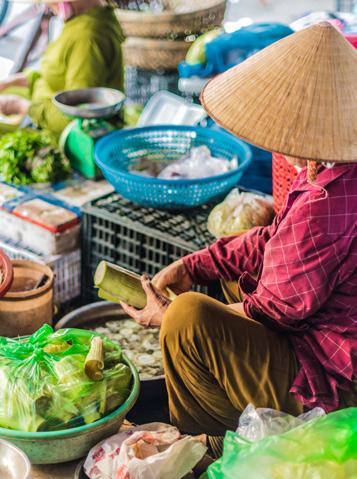



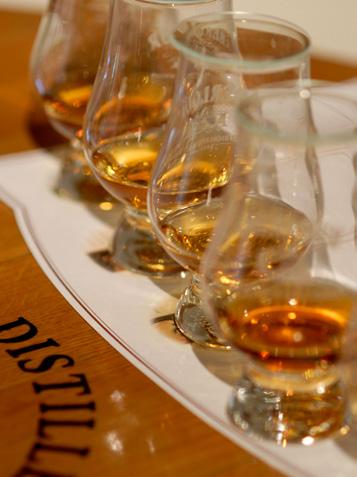

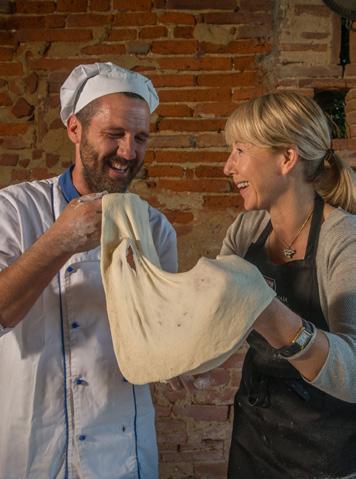
Buenos Aires, Argentina
Experience the generosity of Argentine hospitality during an unforgettable dinner at the home of a local. In Argentina, dinner is more than a meal; it's a cherished social event that unfolds at a leisurely pace, fostering connections and building memories that last a lifetime. You'll be welcomed with open arms and invited into the home of an Argentine family. Savour appetizers that offer a glimpse into the flavours of Argentina. Then take your seat at the dinner table, where a typical three-course Argentinian feast awaits. The delectable selection may include succulent beef, flavourful fish, or tender chicken, all thoughtfully paired with your choice of red or white wine. The flavours of Argentina will dance on your palate as you indulge in this culinary journey filled with laughter, cultural enrichment, and newfound friendships.
Experience on our 18-day South America & the Chilean Fjords voyage from Buenos Aires to Santiago or vice versa.
Napier, New Zealand
Sample a remarkable array of wines and savour local produce from two of Hawke’s Bay's most esteemed producers. The roots of viticulture in Hawke’s Bay trace back to 1851, and today, this region's mild climate and abundant sunshine create the perfect conditions for crafting exceptional wines. At one of Hawke’s Bay’s premier wineries, delve into the history of the vineyard and winemaking process as you explore the winery and gain insights into the art of grape cultivation setting the stage for an unforgettable wine-tasting experience. Your journey continues to Abbey Cellars, a boutique winery founded in 2002 by the Haworth family. Here, the tradition of winemaking is revered, with a commitment to handpicked grapes and aging wines in premium-quality French oak barrels. Explore the inner workings of this winery on a guided tour and experience the meticulous craftsmanship behind each bottle.
Savour the fruits of their labour with a tasting of their exceptional wines.
Experience on our 15-day Australia & New Zealand voyage from Sydney to Auckland or vice versa.
Ho Chi Minh City, Vietnam
Join a seasoned Vietnamese chef for an enlightening market tour and a cooking experience that promises to be a feast for all your senses. Your gastronomic journey begins at Bên Thành Market, the largest and most captivating food market in Ho Chi Minh City. The sights, sounds, smells, and flavours epitomise the essence of Vietnam. With your chef as your guide, you'll navigate the labyrinth of stalls, gaining insight into the locally sourced ingredients that form the backbone of Vietnamese cuisine. Unlock the secrets of crafting the perfect spring roll as your chef imparts wisdom on ingredient selection and preparation techniques. You'll discover the subtleties of combining fresh produce and spices to create a harmonious explosion of flavours. Your chef will reveal the intricate and time-honoured tradition of vegetable carving—a true art form in Vietnamese cuisine – and you’ll have the chance to carve your very own vegetable flowers. Come prepared to ignite your passion for cooking and immerse yourself in the flavours, traditions, and rich history of Vietnamese gastronomy.
Experience on our 15-day Southeast Asia & Hong Kong voyage from Bangkok to Hong Kong or vice versa.
Savour the exquisite taste of fine French cuisine in this unique Mediterranean dining experience of unparalleled elegance. Begin with a scenic drive along the coastal road, where the Mediterranean Sea stretches out beside you. At L'Épuisette, perched next to the charming fishing port of Vallon des Auffes, you'll be greeted with a glass of champagne. From here your senses will be
tantalised by the masterful creations of Chef Guillaume Sourrieu, a culinary virtuoso who returned to his roots in Marseille after 15 years of touring top-class restaurants in France. In the private room dedicated to your group, be enchanted by an elegant five-course meal that represents the pinnacle of French culinary artistry. The menus at L'Épuisette are a testament to the finest ingredients sourced from the sea, with fruits de mer and fish served on platters that are nothing short of works of art. Each dish is a masterpiece, dressed with sensational sauces, delicately adorned with seasonal flowers, and meticulously crafted to delight both the eye and the palate.
Experience on our 8-day Iconic Western Mediterranean voyage from Barcelona to Rome or vice versa.
Various locations around the world
Embark on a culinary journey like no other as you shop and dine with our ship's executive chef in some of the world's most enchanting cities. From the vibrant streets of Barcelona and the shores of Bergen to historic Dubrovnik and the bustle of Mumbai, prepare for a truly mesmerising experience accompanied by delectable cuisine.
This one-of-a-kind interactive culinary experience begins at a local market where you’ll spend several hours learning about and hand-picking ingredients that will become the heart of regional dishes that you will enjoy back on board. As the sun sets, join our culinary maestro at our special Kitchen Table restaurant, where you'll delve into the secrets of culinary artistry, from cooking techniques to preparation and the fine art of presentation. You'll have the opportunity to lend a hand and savour a meticulously crafted three to five-course feast, perfectly paired with exquisite wines. This is a unique opportunity to shop, cook and eat with the masters.
Experience in more than 50 cities and towns on our ocean ships.
We asked some of our past guests their favourite dining venues on board our ships, why they love them and some of the dishes they enjoyed
We believe food is one of the best ways to experience a destination, so we make sure your culinary journey starts as soon as you board our ships.
Our gastronomic offering is deliberately destination-inspired to further immerse you in the destinations you visit. Our talented chefs are dedicated to creating unique
“My favourite place to relax is in the Wintergarden with delicious afternoon tea and friends – or a good book from the library!”
–Sharee C.regional dishes incorporating fresh ingredients sourced from local markets and suppliers at ports of call.
On board our ships, you will be spoilt for choice with up to eight dining options to choose from and ever-changing menus. The best bit, you can dine at any of our venues, at no extra charge, they are all included in your cruise fare.

“Always enjoyed going to the sushi station in the World Cafe on Viking Mars. The food was always fresh, interesting, well prepared and visually appealing.”
 –Keith James W.
–Keith James W.
“The enjoyment of sitting out on the Aquavit Terrace watching the world go by while enjoying the wonderful food and wine on board.”
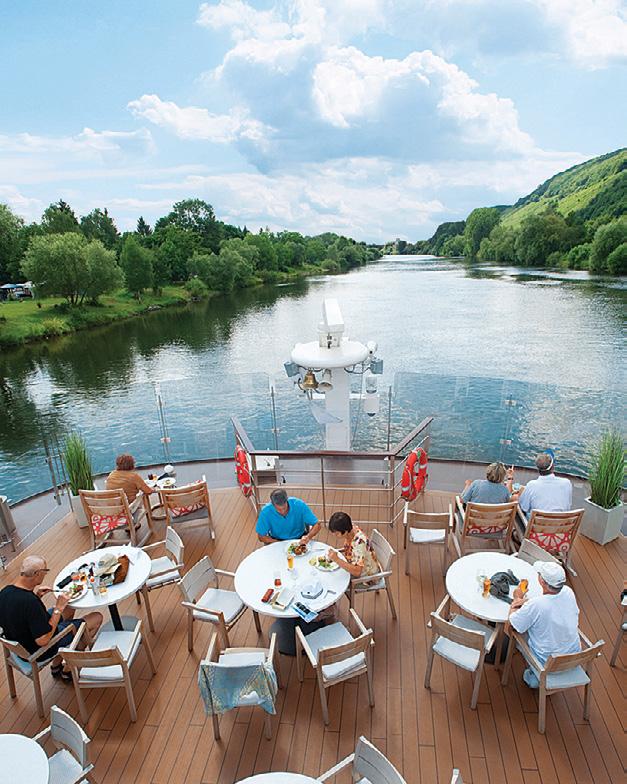
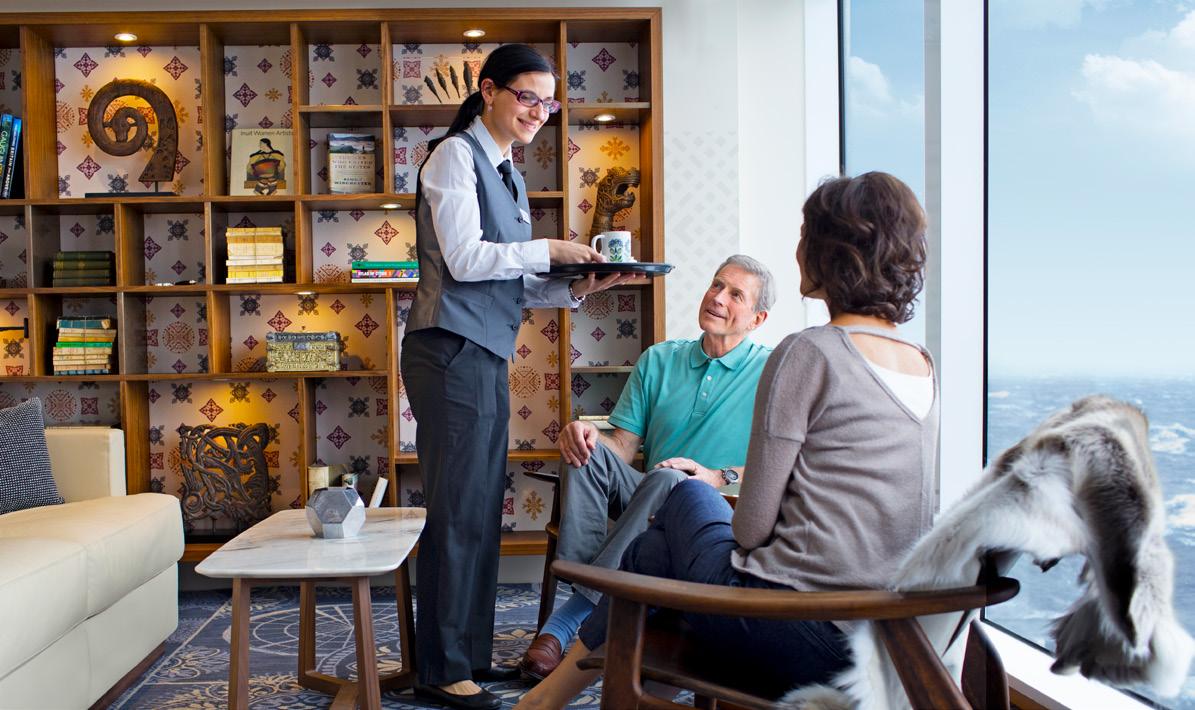
“The burger at the Pool Grill is a must at least once on your cruise. The perfect casual lunch between dips in the pool and snoozes on a sun lounge.”
“Relaxing in the Explorers Lounge with a book, a coffee and snuggling into a reindeer skin on the lounge. Sea on the horizon, heaven.”
 – Jill P.
– Arist C.
– Nicole H.
– Jill P.
– Arist C.
– Nicole H.
“When on the Viking Homeland cruise we enjoyed the Kitchen Table experience. Shopping for and then eating such exceptional food, especially the crab claws.”

“Manfredi’s – Costolette d’Agnello (Rosemary, parmesan crusted lamb). Succulent lamb with the tastiest crust, it’s so delicious it just melts in the mouth. Enjoy with grilled asparagus and potato mash.”
 – Elizabeth H.
– Susanne J.
– Elizabeth H.
– Susanne J.
“Chef’s Table is my go-to when on board a Viking ocean ship. I love the degustation style of dining and the innovation that the chefs bring to each specialty menu, usually themed around the part of the world we’re visiting. They literally give you the world on a plate.”
– Stephen F.“The Restaurant on the river Longships impressed with the floor-to-ceiling windows and the wait staff's attention to my elderly mother’s request for a Coeliac diet. Each morning she was served gluten-free toast and advised of what they could prepare for her at each meal, she certainly enjoyed the attention.”
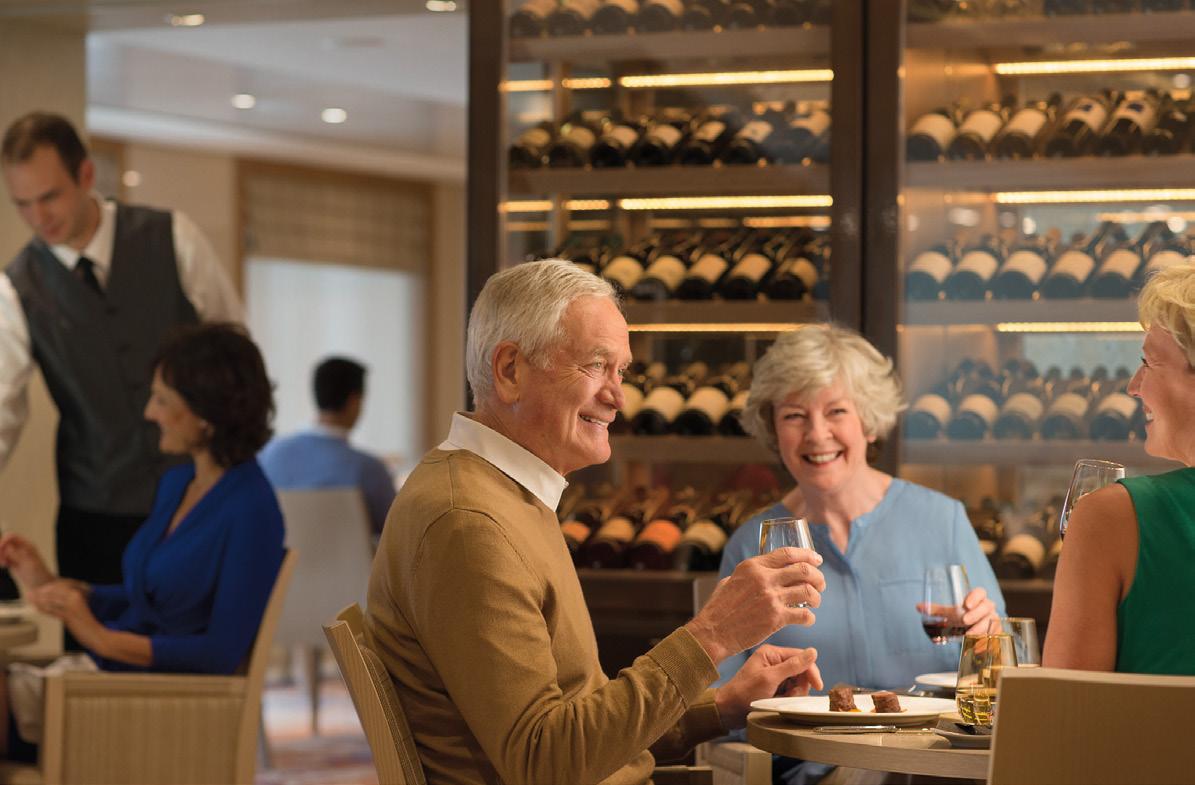
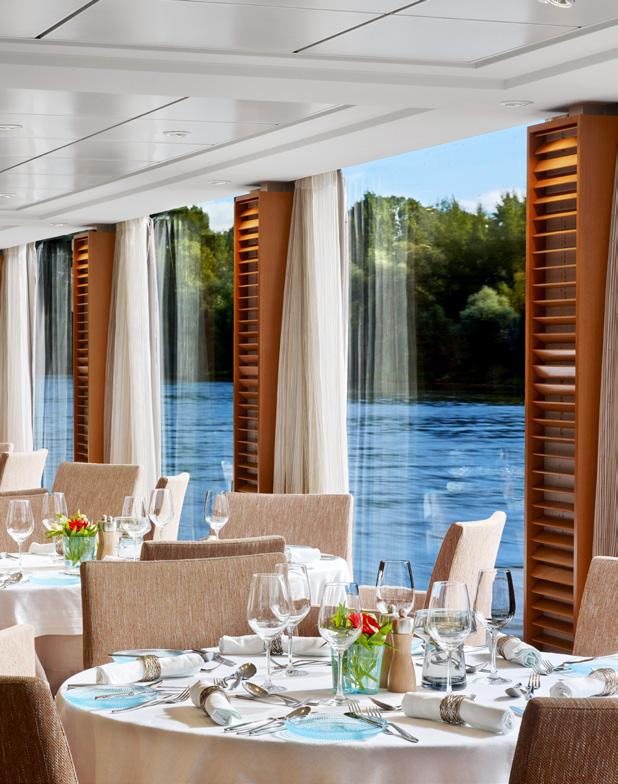 – Victoria S.
– Victoria S.
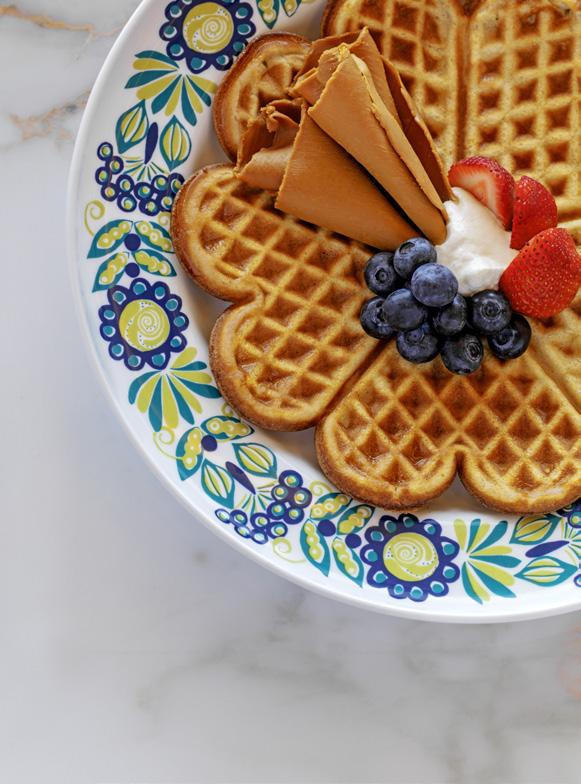
“Eating at Mamsen's, especially the brown cheese – unusual and different but nice.”
– Margret C.
We look at the River Rhône, from whose banks you can explore the rich history and delectable food and wine of southern France
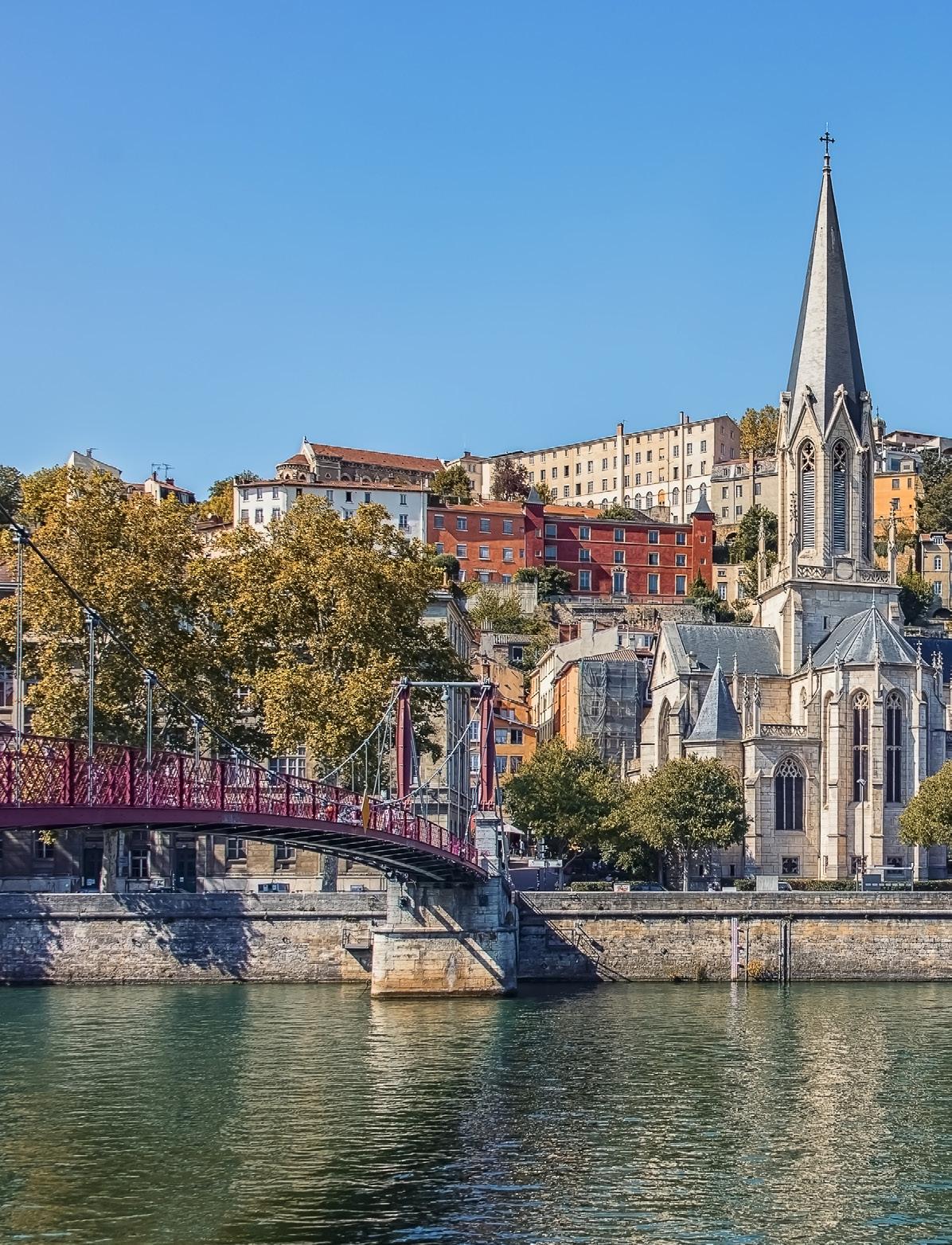
The mere mention of the Rhône and the sun-drenched landscapes through which it flows evokes images of lavender fields, ruby-red wines, salty charcuterie and decadently pungent cheeses. A voyage along the Rhône is a journey through the gastronomic heart of France, as well as a step back in time. From the Romans and their magnificent architectural legacy of aqueducts and arenas to the more recent world of Vincent van Gogh, who took his inspiration from the hazy landscapes and yellow sunflower fields around Arles.
The Rhône rises high in the Swiss Alps, flowing through Lake Geneva, cutting through the Jura Mountains and meandering south towards Lyon, where it is joined by the Saône. From here, the now powerful river flows south, carving a course through steep cliffs and forested mountains dotted with ruined castles. It is towards Avignon that you’ll see those iconic lavender fields, regimented rows of scented, purple flowers, as well as a patchwork of Van Gogh’s yellow sunflowers. Vineyards flank both sides of the Rhône along its southern stretch through historic Avignon and Arles until the majestic river branches out into its wide, marshy delta, the salty wetlands of the Camargue.
Throughout history, the Rhône has been an important trade route, providing a means of transport between northern Europe and the Mediterranean for goods including tin, amber and salt, as well as wine. The area has been inhabited for thousands of years; the city of Marseille, east of the Rhône delta, was founded as early as 600
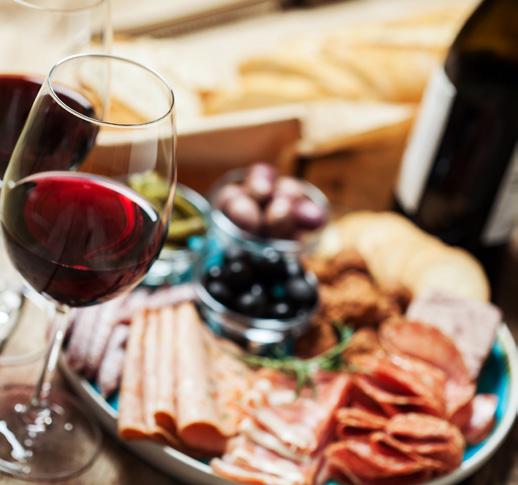
BC. The Romans, travelling through the area, planted vines and many of the vineyards date back two millennia. It is the Romans who were also responsible for the region’s original roads and the graceful aqueducts along the river. Early vessels were typically wooden barges, drifting downstream with the flow and being towed back upstream by horses.

The Rhône rises high in the Swiss Alps, flowing through Lake Geneva, cutting through the Jura Mountains and meandering south towards Lyon, where it is joined by the Saône
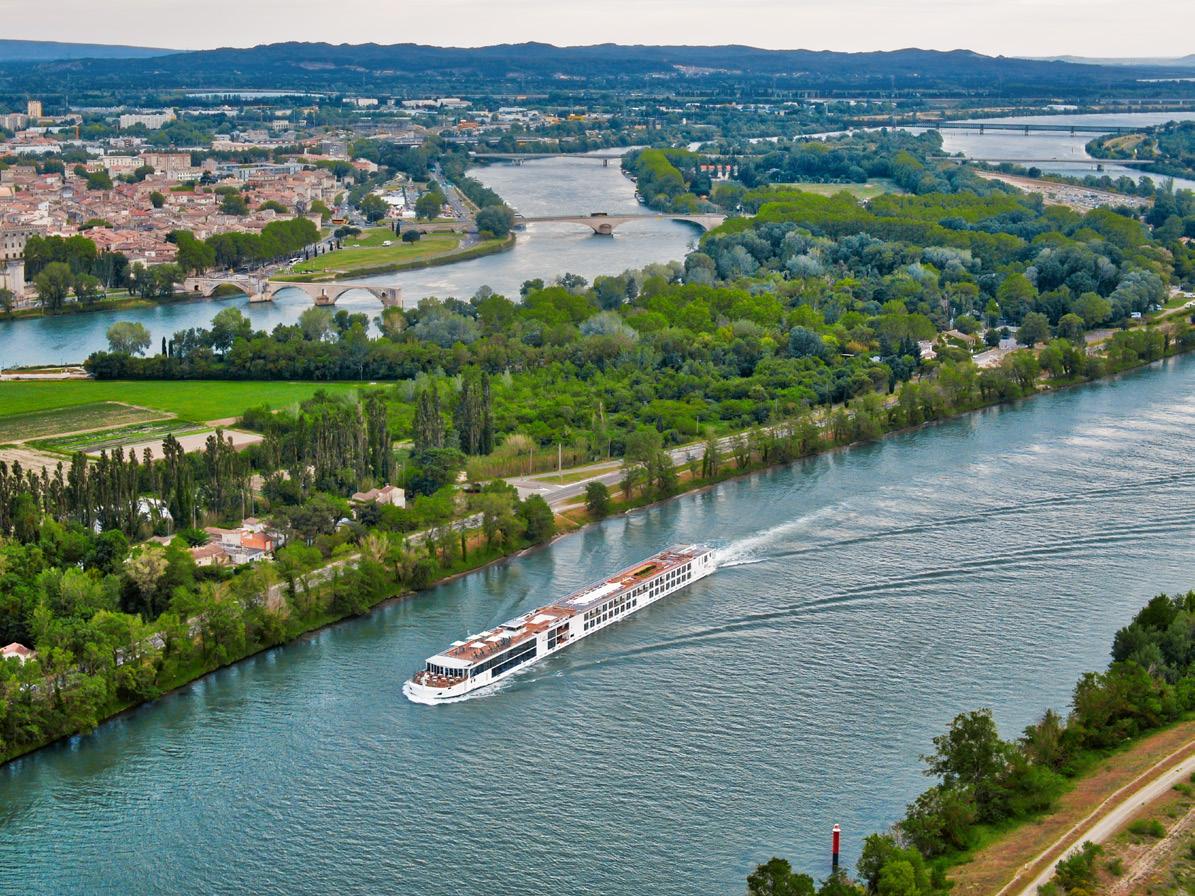
Later, paddle steamers were once an everyday sight on the Rhône and as engineering became more sophisticated, cables were attached to the riverbed to effectively tow vessels upstream.
The Middle Ages was a time of almost constant turbulence and war in France, but the city of Lyon nonetheless expanded continually over the centuries, eventually becoming an essential centre of the Resistance in World War II. It was several decades after the war, once the region had become firmly established for tourism, that pleasure cruising on the Rhône actually began. Cruises begin at Lyon, a cultural and gastronomic centre with an intriguing history. The story of regional silk production is told in the fascinating textile museum, while the Musée des Beaux-Arts houses one of France’s finest art collections. The city is dotted with bouchons, or local restaurants, where specialities are coq au vin, quenelles de brochet (mousse of pike), cheeses and charcuterie. Any tour of the city includes a trip to the top of Fourvière Hill,
which is dominated by the magnificent Basilica of Notre Dame de Fourvière, from where stone angels gaze down over the rooftops to the confluence of the Rhône and the Saône.
Tasting the produce of these vineyards is a highlight of any Rhône cruise, starting with the smoky white Burgundies of Mâcon on a day trip along the wine route. Beyond Lyon, the river flows through Tournon, also famous for its punchy reds and in an especially beautiful setting, guarded by a 10th-century castle cut into the rock. Tournon is also the gateway to the craggy Ardèche region, where sleepy towns nestle between lavender fields and smaller rivers carve deep gorges through the bleached limestone. Nearby Viviers is a beautiful old town, rich with medieval buildings, and a wonderful place to explore on foot.
The Roman city of Arles is pure Van Gogh country and it’s easy to see how the dazzling yellows and rusts of the countryside
Beaujolais Wine Regioninspired the artist’s swirls. Van Gogh aside, Arles is defined by its magnificent Roman ruins, including the 20,000-seat arena, Les Arène d’Arles.


Once the heart of the Christian world, Avignon sprawls on the banks of the Rhône, encircled by medieval walls. The Gothic Palace of the Popes, a UNESCO World Heritage site, is breathtaking in its sheer scale. The famous Pont d’Avignon, juts out into the river below the Palace. The Popes, during their reign, were partial to a tipple and powerful reds have been produced nearby Châteauneuf-du-Pape, their summer home, for around 700 years.
Gathering strength, the river flows further south until it splits into a series of channels crossing the Camargue, a region of sun-bleached marshes home to a unique ecology. Pink flamingos feed in the salty water, wild, white horses roam, and black bulls are raised by modern-day cowboys. It is in this mysterious setting, a long way from the glamour of the coastline stretching away to the east, that the Rhône meets its final destination, the Mediterranean Sea.
starts from $3,895pp in Standard stateroom.
The picturesque rooftops of Viviers in the Ardèche region of FranceJoin food and travel writer Becky Wiggins as she recollects her culinary highlights from her European river cruise
Close your eyes for a second and imagine biting into the perfect, crisp, buttery gingerbread – sweet and melt-inthe-mouth with just the right amount of spicy warmth. My favourite can be found at the stylish Café Simon, a hop and a skip from the shimmering white limestone wedding cake of St Stephen’s Cathedral in pretty Passau, known for its glitzy churches with interiors bursting with gold leaf, marble and stunning frescoes.
Of course, you don’t have to travel all the way to Germany for a sweet treat, but a European cruise is the perfect opportunity to sample a range of culinary delights. Whether your foodie heaven is luxurious fine dining or a juicy gourmet burger, you’ll find it in abundance on your Viking Longship. The food on board cleverly reflects the cuisine of the destination and nothing is quite so welcome as a steaming bowl of rich, paprika-laced goulash after a chilly day exploring Budapest.
Cruises are heaven for food lovers, and a river cruise ship is a wonderful form of travel. Imagine meandering gently from the heart of one beautiful destination to another, each ripe for culinary discovery. Experiencing the gastronomic traditions and specialities is one of the best ways to really get under the skin of a region – history and culture are inextricably linked to food and
wine – and the best thing about a Viking river cruise is having an expert in every port to guide you to that market the locals want to keep secret, or the tucked away vineyard that produces the best local vino.
The Wachau Valley Gorge is one of Europe’s most beautiful stretches of river, with sweeping vistas of lush green banks lined with weeping willow and silver birch trees. Ruined castles and pastel coloured buildings dot the landscape, alongside acres of vineyards, introduced by the Romans and still used today by local winemakers. Keen to discover more about the Wachau Valley’s famous wines, I joined the optional trip to Winzer Krems, whose Sandgrube 13
chestnuts, and steaming mugs of mulled wine. Vienna is perfect at any time of year, but in her Christmas finery, she’s irresistible. Snuggle up on a horse-drawn fiaker, or visit pretty pink Café Diglas – a Viennese institution – for frothy cinnamon lattes and rum-soaked punschkrapfen, enjoyed on velvet chairs under chandeliers hung with old whisks and wooden spoons.
The beautiful Christmas markets are a must. Wrap up warm and explore the pretty stalls packed with handmade crafts – a glühwein sipped while wandering keeps out the cold. If you fancy getting a bit more hands on, I enjoyed an afternoon apple strudel lesson with the patient chefs on board Viking Vilhjalm (even more so when we got to eat the results with lashings of cream).
vineyard is run as a co-operative, with over 1,000 members working 2,500 acres of vines.
More than half the grapes are the fresh, zingy Grüner Veltliner, and we sniffed and sipped the peachy wine as we took a tour of the cellar and learned more about the production process. The winery also produces a fruity, apricot scented Riesling and a velvety red wine, with delicious notes of sour cherries and cinnamon. You’ll often find the local wines available with dinner on board, but I purchased a selection, just to be on the safe side.
Christmas is the perfect time for a European river cruise - think twinkly lights, the scent of roasting
If I’m not eating or dreaming about food, I’m planning my next foodie adventure, and there’s so much of Europe left to explore: sun-drenched Portugal is on my list – a melting pot of cuisines and cultures (and a perfect excuse to indulge in the traditional Pastéis de Nata, a tart with a crisp pastry shell enveloping a cinnamon-topped custard filling), as is the Rhône Valley region – a gastronomic haven for food-lovers, with historic vineyards and local specialities including charcuterie and pâté, heavenly cheeses and local breads and pastries. Where will your next adventure take you?
Experiencing the gastronomic traditions and specialities is one of the best ways to really get under the skin of a region
Clockwise, from top left: A tempting salty pretzel, a popular German snack; Becky stepping ashore at one of the stops along her river cruise; the perfect slice of cake enjoyed with a foamy coffee; Café Diglas in Vienna, with its quirky chandeliers and age-old charm; beautiful old buildings line the riverside; sweet treats, pretty in pink; the sunset view from deck; toasting the trip with a local beer

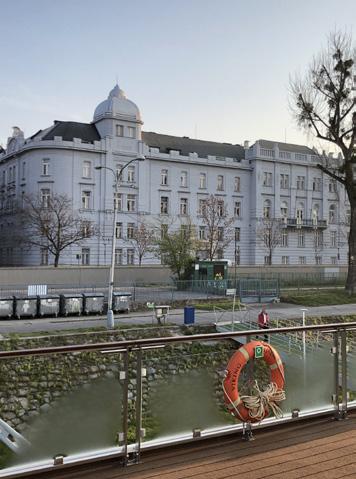

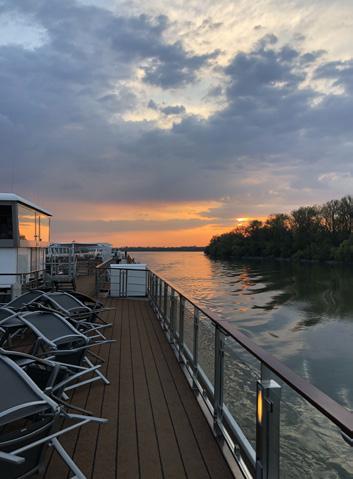

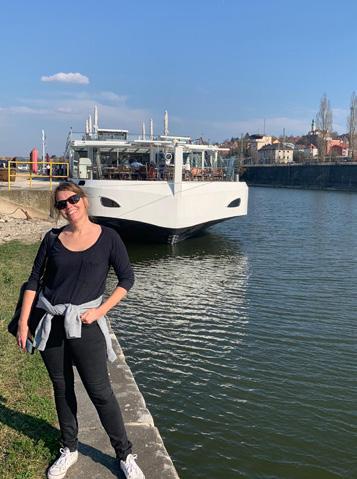

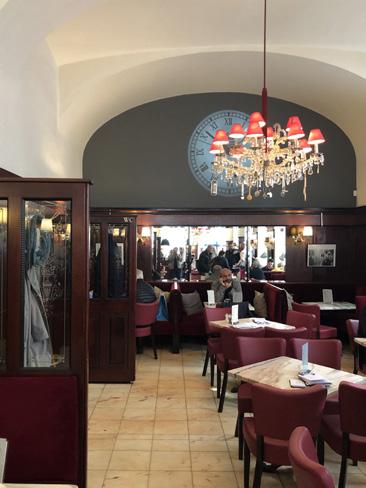
Wine expert Bartholomew Broadbent recalls some early travel adventures, and his discovery of the wine regions flanking the Danube
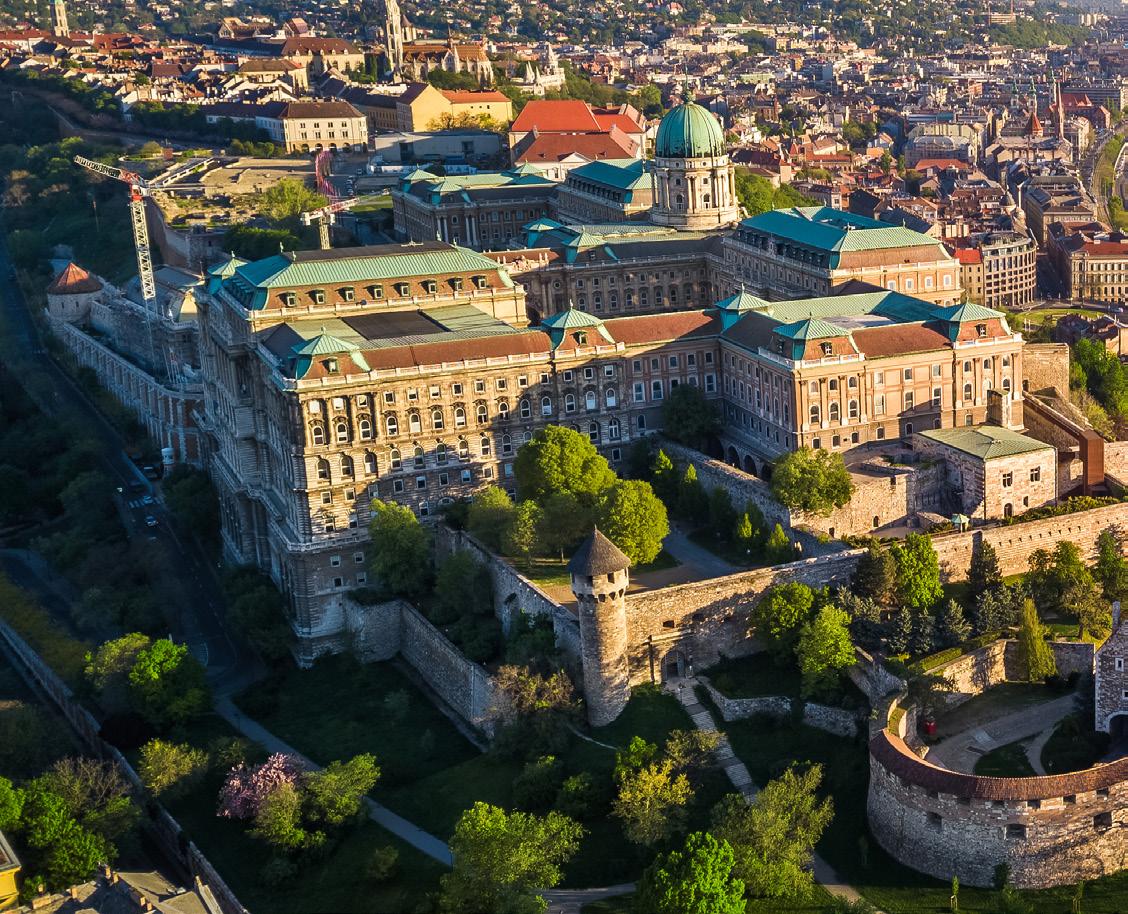
At the age of seven I was left alone with my sister, Emma, three years my elder, in Budapest, for an entire day – from before dawn until after dusk. My parents’ destination was, back then, a fourhour drive each way at the best of times. So why would parents abandon their pre-pubescent children early in the morning, leaving them to fend for themselves, until long after dinner? And what did we do with ourselves all day?
We were staying in a hotel across the street from the Danube. Throwing stones in the river provided
entertainment for a while, but the land-locked country, which did not allow its citizens to travel beyond borders at that time, had to provide some other form of water-based experience beyond the banks of the Danube. We were fortunate that the hotel was next to a massive
lounging pool. And it had a lot of Hungarians who didn’t speak a word of English. I spent the better part of the day enjoying splashing around in these pools.
water park. It had a salt-filled pool in which you could float as if in the Dead Sea, a bubbling warm pool like hot springs, and a regular swimming pool and shallow
Dinner was another memory of my adventures in Budapest. My sister and I dined alone in the very posh and romantic hotel restaurant. We had goulash, the traditional Hungarian dish, heavily meaty and usually spiced with paprika, followed by wonderful desserts including delicious palacsinta, krémes and dobos torta. We were serenaded by musicians, a man with a violin who probably didn’t expect a tip from
As great a capital as Budapest is, with its spectacular architecture and history, Hungary is better known for its wines
us, and his accompanists. Nobody spoke any English.
If my parents had never returned from their day-long excursion to the Tokaji wine district, perhaps I would be speaking Hungarian today! Tokaji was the reason for their absence, and I have grown to understand their reasons for leaving. Thinking we’d be bored by the long journey there, they deserted us to go on a pilgrimage to discover the region known for making one of the most legendary wines in the world. As great a capital as Budapest is, with its spectacular architecture and history, Hungary is better known for its excellent array of wines. For those of you my age, or senior, you
will doubtless remember the very successful Hungarian wine called Bull’s Blood or Egri Bikavér.
It got a bad name because it became so commercially successful but, actually, red wines from Hungary can be very fine indeed. It produces wonderful dry white wines too, especially from the Furmint grape. Although it is only the famous dessert wine, Tokaji, made from the Aszú grape, which could possibly entice a couple to risk the abandonment of their children to the communist regime.
Tokaji produces one of the most exquisite sweet wines in the world, to rival the very greatest
Trockenbeerenauslese wines from Germany and the best Sauternes from Bordeaux. These Tokaji wines vary in sweetness levels, resulting from shrivelled grapes, the ultimate being the Essencia which is made from Aszú grapes which can only be described as being beyond raisins in ripeness. They are hung and very slowly allowed to drip any remaining juices.
The Hungarian wine regions await discovery and are oft overshadowed by their European neighbours, but they are by no means the only wine regions to be discovered floating down the Danube. The Danube is the second longest river in Europe.
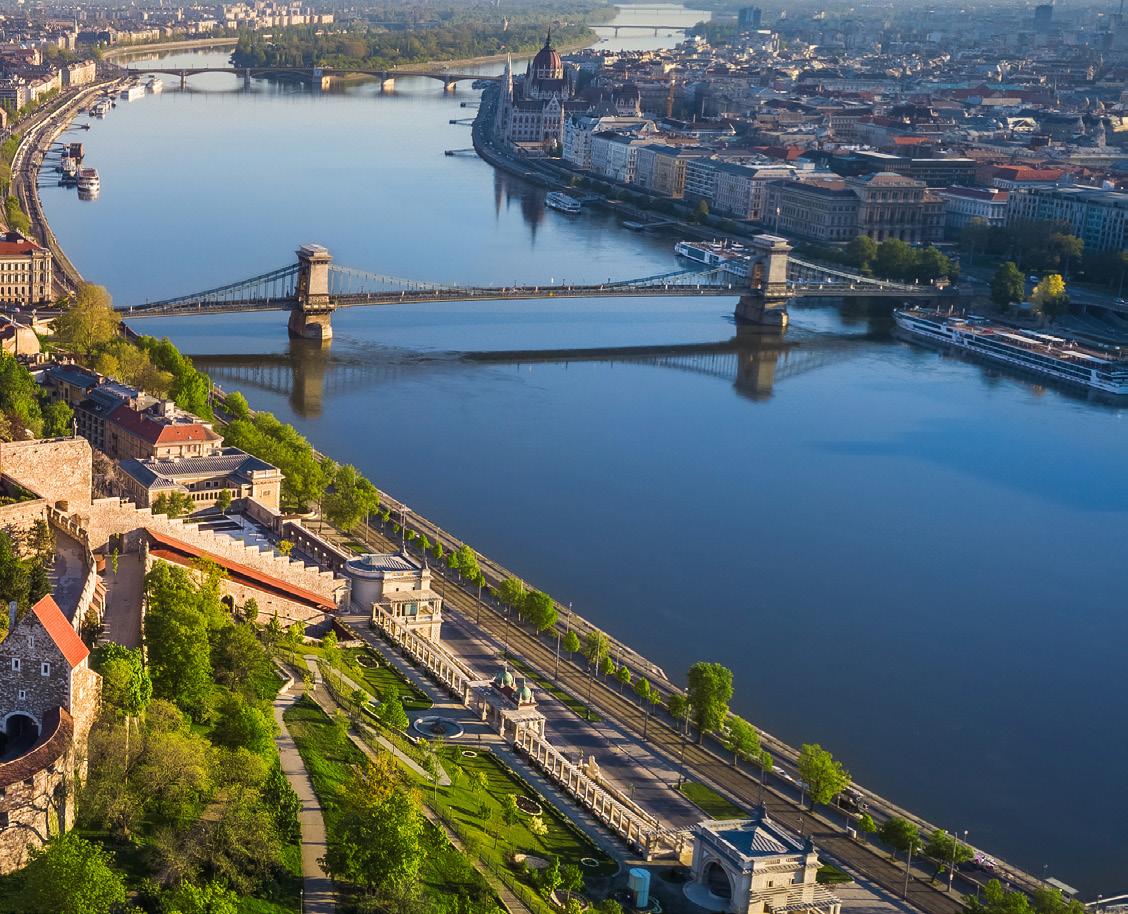 Above: The aerial skyline view of Budapest at sunrise, with Szechenyi Chain Bridge, Matthias Church and the Parliament of Hungary
Above: The aerial skyline view of Budapest at sunrise, with Szechenyi Chain Bridge, Matthias Church and the Parliament of Hungary

It flows out into the Black Sea after springing to life west of Munich in Germany, flowing lazily eastward through nine other countries; Austria, Slovakia, Hungary, Croatia, Serbia, Romania, Bulgaria, Moldova and Ukraine, all of which are known for their winemaking, and many of which have vineyards based on the riverbanks.
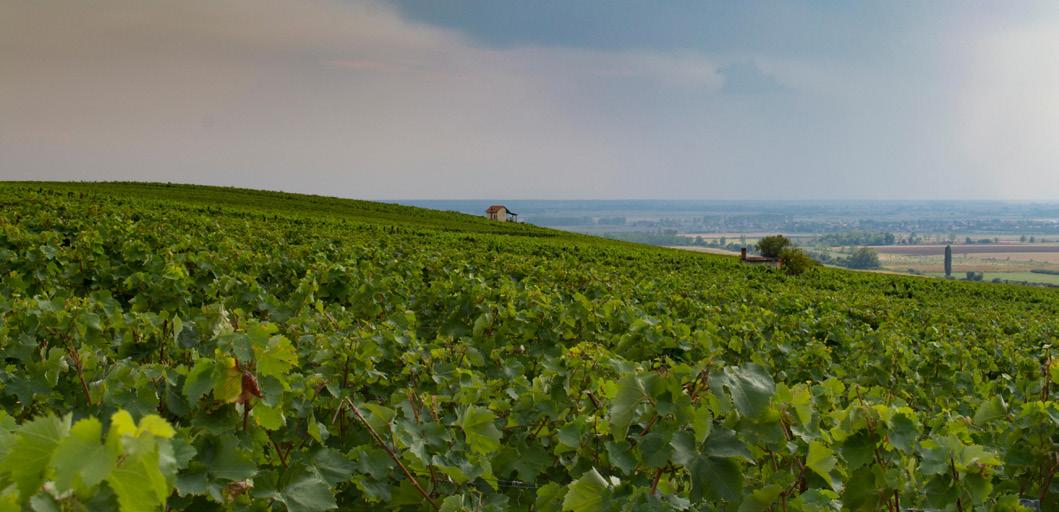
Little did I know at the age of seven that I would be writing fifty years later about my experiences on the Danube for Viking’s magazine and hosting Wine Wednesdays, the popular Viking.TV series, in which we feature the lovely wines of Erich Machherndl in Wachau, in our third episode. And perhaps this childhood experience was the start of my interest in this country and its production. Austria’s Wachau can claim the crown, along with Tokaji, as the other best-known wine region within all the wine producing countries through which the Danube flows. Sadly it would be impossible, in a short article, to articulate the incredible diversity of the wines grown along the great river Danube, and in the countries through which it meanders. They are mostly unknown regions, even within the wine trade, but await discovery for
anyone with a wine interest and fortunate enough to take a cruise along the river.
In February of 2021, my sister, Lady Emma Arbuthnot, Chief Magistrate Judge of England and Wales, was elevated to the High
Court. I wonder what she would say to parents who abandoned their children for a day, leaving them alone, in a hostile foreign country? No doubt she’d be most disapproving. But one glass of Tokaji Aszú Essencia would make any great winelover more understanding of my parents’ decision back then. It was a pilgrimage of sorts.
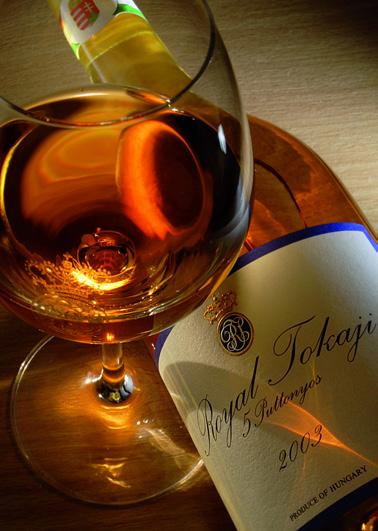
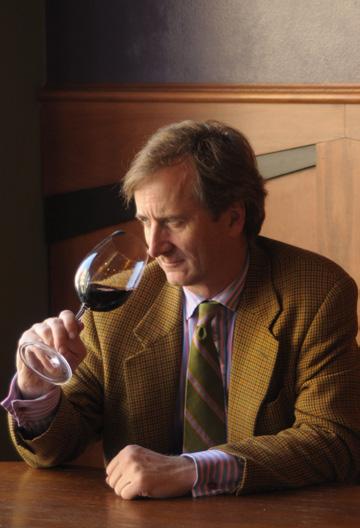 Clockwise from top: Winding rows of vineyards in Wachau valley; Bartholomew Broadbent enjoys a Hungarian red; a bottle of Tokaji from the Tokaji wine district in Hungary
Clockwise from top: Winding rows of vineyards in Wachau valley; Bartholomew Broadbent enjoys a Hungarian red; a bottle of Tokaji from the Tokaji wine district in Hungary
The Hungarian wine regions await discovery and are oft overshadowed by their European neighbours
Regensburg to Budapest or vice versa
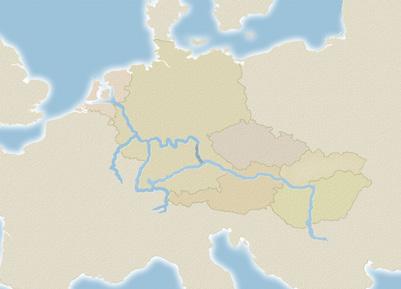


8 DAYS | 3 COUNTRIES
6 GUIDED TOURS
SET SAIL: NOV–DEC 2024; $3,795pp in Standard Stateroom
SAVE up to $2,000 per couple

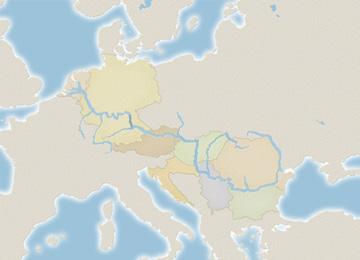
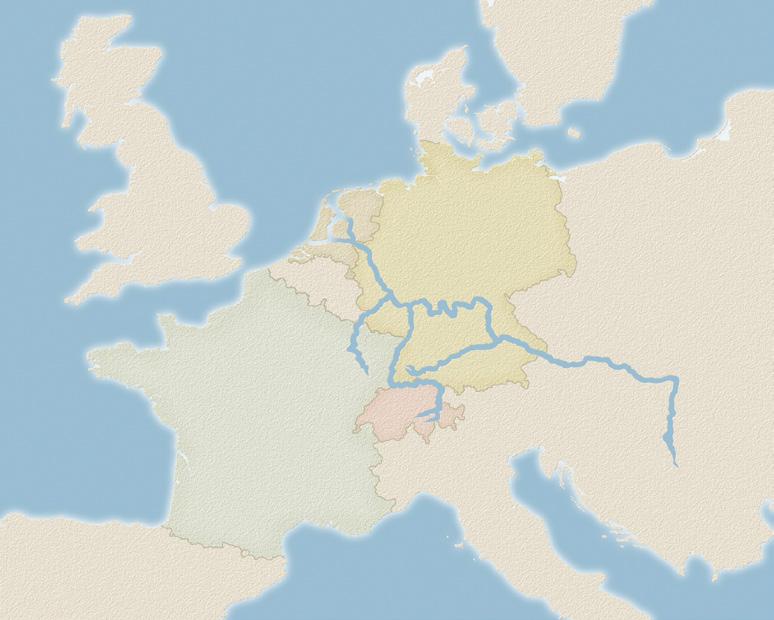

Amsterdam to Bucharest or vice versa
23 DAYS | 8 COUNTRIES
19 GUIDED TOURS
$5,195pp in Veranda Stateroom $5,995pp
SET SAIL: APR–OCT 2024; $12,695pp in Standard Stateroom
SAVE
$18,295pp in Veranda Stateroom up to $4,600 per couple
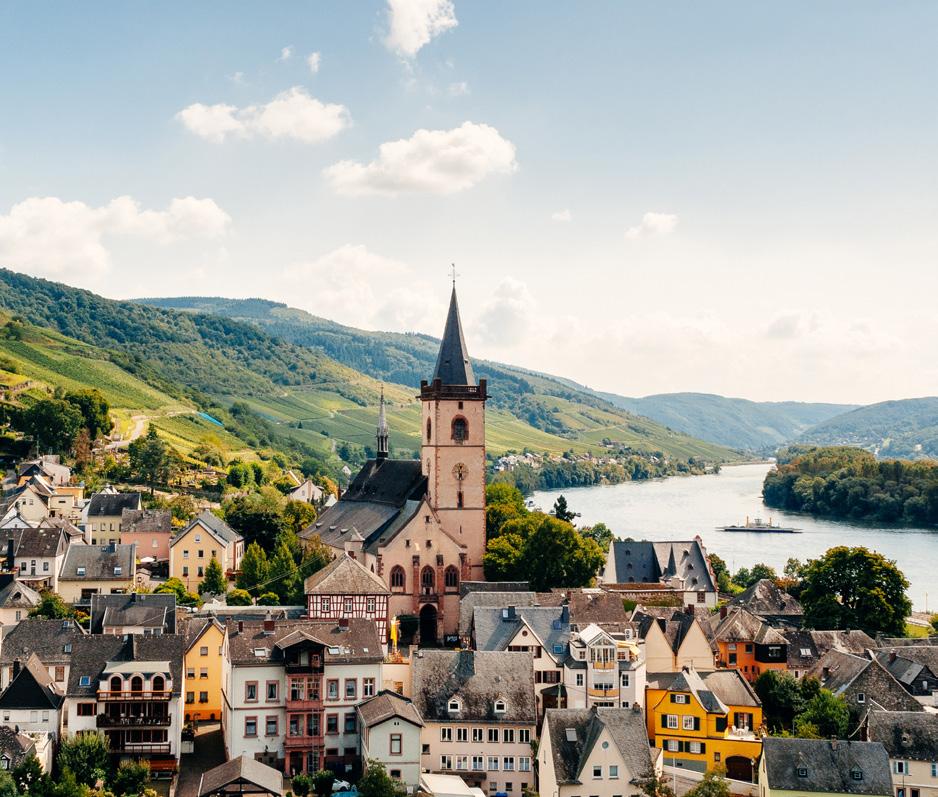

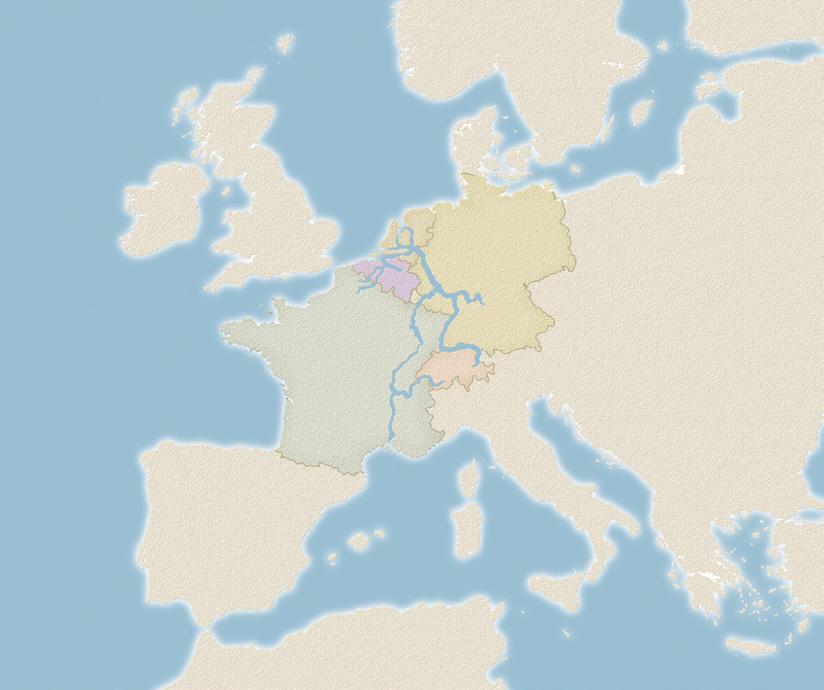
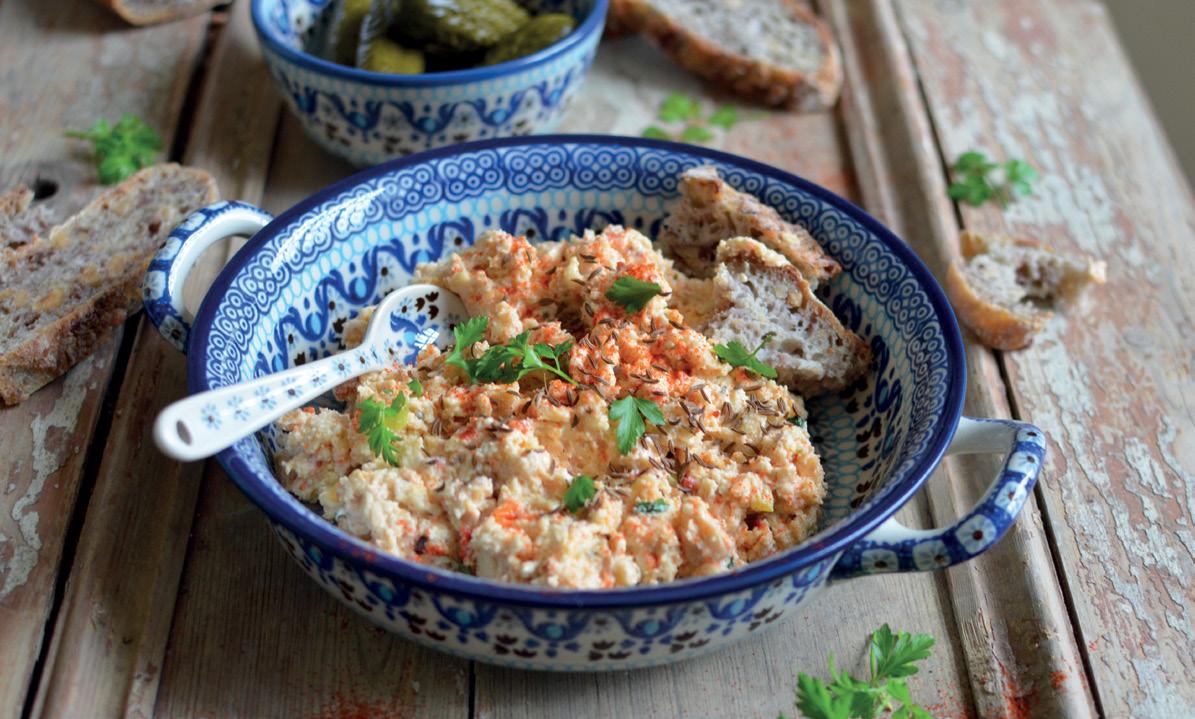
When enjoying German and Hungarian cuisine on your travels, you may be surprised at the similarities in what is offered to you. In particular, Hungarian cuisine is extremely diverse with some familiar names on the menu such as Schnitzel, Stuffed Cabbage, Pasta, Strudel and Sauerkraut. The foods of Hungary are very much influenced by the Austro-Hungarian Empire, as well as other influences such as the Ottoman Empire.
This small selection of recipes highlights the diversity of both countries, and you will see most of these delicious dishes whilst travelling through Germany, Hungary and Austria too. Common ingredients to both countries are pork, sausages (especially smoked sausages), potatoes, beer and of course paprika, which is a very popular spice that is used in most Hungarian cooking.
Other common spices and herbs that are used are caraway seeds,
fennel and flat-leaf parsley. The food in this region is often seen as hearty and stodgy, but both Germany and Hungary offer the most ornate and delectable cakes and pastries for those who have a sweet tooth, with two of the most famous being the Hungarian Dobostorta and the German Schwarzwälder Kirschtorte (Black Forest Gâteau).
The following recipes highlight some of my favourite recipes in the region, and are all easy to prepare.
This easy-to-make German-style potato salad (called Schwäbischer Kartoffelsalat in German) comes from the Swabien region of Germany. It is the perfect accompaniment to any main course or as a side dish for picnics, barbeques, lunch boxes or buffets.
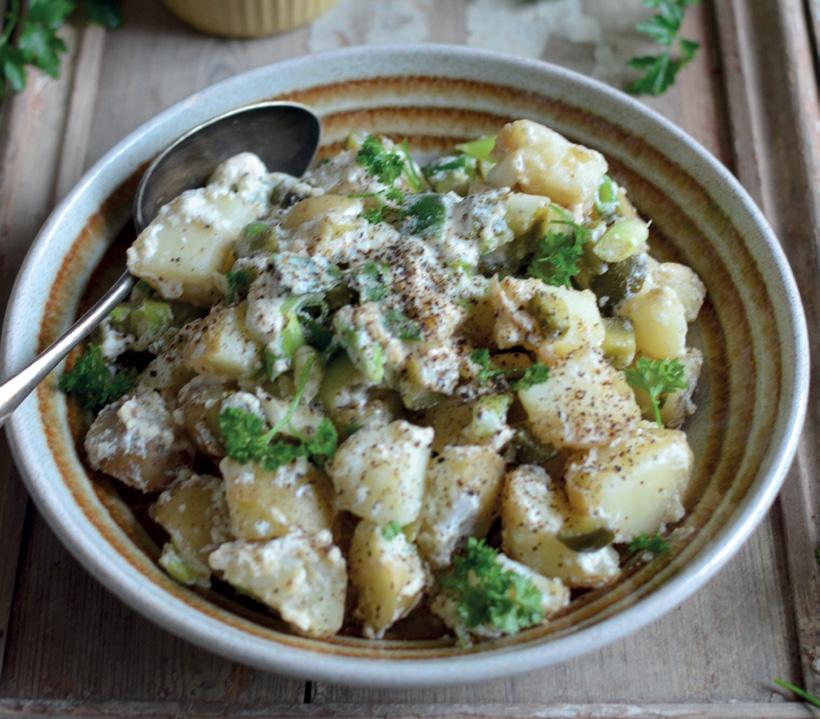
Some recipes suggest adding a little chicken or beef stock to the cooked potatoes which will give your salad a meatier flavour. Traditionally, the potatoes are peeled and then sliced, but as I used baby new potatoes in this version, I left the skin on.
INGREDIENTS:
600g potatoes, peeled or skin on if using baby potatoes
50g finely diced cornichons
6 finely chopped spring onions, or ½ white onion, peeled and diced
1 tablespoon liquid Maggi seasoning
2 tablespoons white wine vinegar
1 tablespoon rapeseed oil
Freshly ground black pepper
Fat leaf parsley, to garnish
2 tablespoons sour cream (optional)
METHOD:
1. Peel the potatoes if needed and cut into small chunks. Boil for about 8 to 10 minutes until just tender. Then drain the potatoes and whilst they are still warm add the cornichons, onion, Maggi seasoning, white wine vinegar and rapeseed oil. Mix gently.
2. Season the mixture with the black pepper and add the sour cream if using. Mix again and spoon into a serving dish.
3. Serve with the parsley scattered over the top.
A delicious Hungarian cheese spread made with the local cheese Liptó (also known as Liptauer in Germany), this accompaniment can also be made with feta cheese, if you cannot source Liptó, and is just as tasty when thickly spread across crudités and crackers as it is when served with gherkins or crusty bread. Many Hungarians eat it for breakfast, and it can also be used as a sandwich spread, which makes it perfect for a packed lunch or picnic.
Serves 4
INGREDIENTS:
225g feta cheese, crumbled
125g full fat cream cheese
1 teaspoon smoked sweet
paprika (save some to garnish)
Ground black pepper, to taste
2 teaspoons caraway seeds (save some to garnish)
Small bunch of spring onions, trimmed and finely diced
Flat leaf parsley, to garnish
METHOD:
1. Place the feta cheese, cream cheese, paprika, pepper, caraway seeds and diced spring onions into a bowl and mix well to form a smooth spread.
2. Spoon the mix into a bowl and sprinkle the caraway seeds, paprika and parsley over the top to garnish.
3. Serve with crusty bread, crackers, gherkins or crudités. (If necessary, you can store the Hungarian cheese spread in the fridge for several hours ahead of serving.)

Due to the strong AustroHungarian culinary influence in Hungary, as I mentioned before, this recipe for Bécsi Szelet translates as Viennese Slice, or as it’s more commonly known in Austria and Germany, Wiener Schnitzel. I have added an optional extra for those who want to serve this as Jägerschnitzel (Hunters Schnitzel) which is basically a Wiener Schnitzel with a German hunter’s style mushroom sauce.
Serves 4
INGREDIENTS:
4 pork or veal escalopes. Seasoned flour, for dredging
1 large egg, beaten with a little milk
Bread crumbs
Vegetable oil, for frying
Butter, for frying
Lemon wedges, to serve
Flat leaf parsley, to serve
METHOD:
1. Put the escalopes on a chopping board, cover them with greaseproof paper, and beat them out as thinly as you can with a meat tenderiser.
2. Dredge the beaten escalopes in the flour, then in the beaten eggs and then coat in the breadcrumbs.
3. Heat the oil and butter together in a large frying pan/skillet and fry the Schnitzels in a single layer,
tuning them over half way through, until they are golden brown. It will take approximately 5 minutes for each side to cook.
4. Drain the Schnitzels well and serve them immediately with wedges of lemon and the parsley or the Jägerschnitzel sauce below.
JÄGERSCHNITZEL SAUCE
INGREDIENTS:
300g fresh mushrooms, peeled, trimmed and sliced
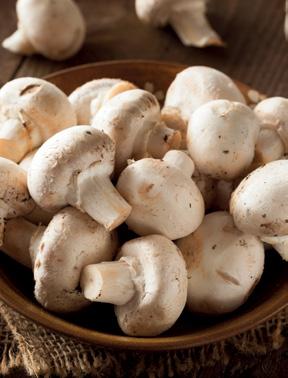
1 onion, peeled and finely diced
Butter, for frying
150ml sour cream
Salt and pepper, to taste
METHOD:
1. Fry the mushrooms and onion in the butter over a gentle heat for 6 to 8 minutes.
2. Add the sour cream and simmer gently for 2 to 3 minutes, season to taste and spoon the sauce over freshly fried Bécsi Szelet (Wiener Schnitzel).

German baked pancakes are very popular in Europe, as well as in the States where many German settlers made their home. The Dutch moniker refers to the group of German-American immigrants known as the Pennsylvania Dutch, where ‘Dutch’ is a corruption of the German autonym ‘Deutsch’. Also called a German pancake, a Bismarck or a Dutch puff, this baked pancake is usually served for breakfast, but is delicious at any time of the day, and tastes even better when accompanied by your favourite jam.
Serves 4
INGREDIENTS:
3 free-range eggs
1 tablespoon sugar
100ml full cream milk
100g plain flour
2 teaspoons vanilla extract pinch of salt
25g unsalted butter
TO SERVE:
4 tablespoons jam of your choice
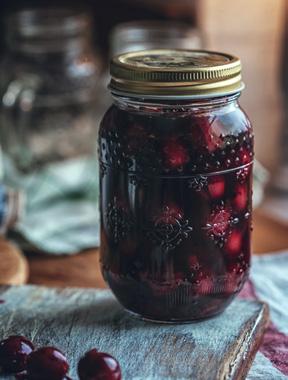
Icing sugar
METHOD:
1. Pre-heat oven to 200°C (400°F/ gas mark 6). Place a cast iron frying pan, skillet or heavy-based baking dish into the oven to pre-heat. I used a 25cm cast iron skillet, but a heavy-based pie dish or an ovenproof frying pan will do.
2. Whisk the eggs with the sugar until light and frothy. Then add the milk, flour, vanilla extract and salt, and whisk until you have a smooth batter. (At this stage, you can cover the batter and leave overnight.)
3. Open the oven and using a heavy duty oven glove, take the heated pan out of the oven and add the butter, swirling it around to coat the
pan until it is all melted. Then pour the batter into the pan and place it back into the oven immediately.
4. Bake for 20 minutes until it is puffed up and golden. The edges will shrink away from the pan too.
5. Spoon the jam over the top with a dusting of icing sugar. Serve straight away cut into wedges with extra jam and sugar on the side.
We take a culinary journey through Vietnam and Cambodia on board Viking Saigon
Gain an insight into the daily life of the Mekong River's communities and learn about the fascinating flavours of this region. From stylish dinners in Ho Chi Minh City featuring modern twists on classic Vietnamese dishes by celebrity chef Luke Nguyen to vibrant food markets and some exotic delicacies not for the faint-hearted.
WORDS CHRISTINE MCCABEWe begin our Viking voyage through Vietnam and Cambodia with dinner. In a handsomely restored colonial building in the heart of Ho Chi Minh City’s historic District 1.
Soft rice paper rolls stuffed with sesame salmon, lemongrass crispy fried pork and La Vong grilled fish marinated in turmeric, galangal and dill.
The Art Nouveau rooms at the fine dining Vietnam House are very stylish, and so is the food, classic Vietnamese dishes given a contemporary twist by celebrity chef Luke Nguyen.
Luke divides his time between Australia and Vietnam and as huge fans we are having a bit of a moment.
Because Luke is in the house. When he discovers we’re from Australia he joins us at our table. We talk food of course. Luke is a passionate advocate for regional Vietnamese cuisine, and this unexpected and very delightful encounter sets the tone for our adventure aboard the Viking Saigon
An elegant new addition to the Viking fleet, Viking Saigon has been purpose built to ply the broad brown waters of the mighty Mekong as it threads through lush, green agricultural and fishing communities.
From the get-go, we are immersed in the daily life of the river, ostensibly through its food because as one of our many charming local guides admits, “the people of the Mekong are obsessed with food”.
We visit little floating villages where fish are penned beneath the houses and fed through holes in living room floors; village children and dogs spend their entire lives afloat, splashing from door to door. Elsewhere wizened gents operate ingenious fulcrum-style nets to fish deeper waters.
Most days we jump aboard little sampans to explore the river’s fringes, put-putting the quiet channels of Evergreen Island (Vinh Hoa) visiting a farming family whose pretty house on stilts is lapped by fields of corn and aubergines.
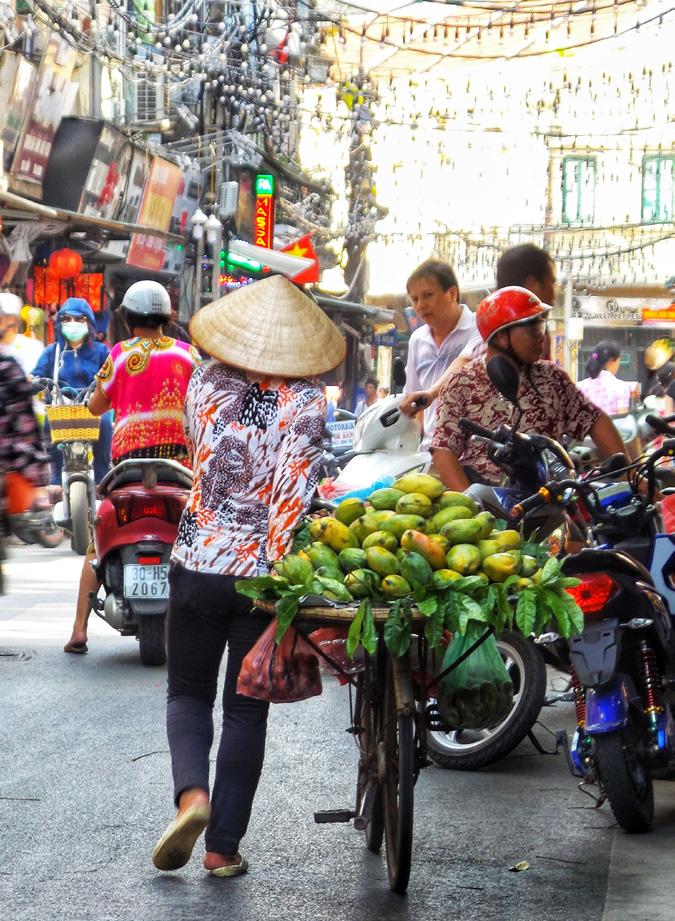
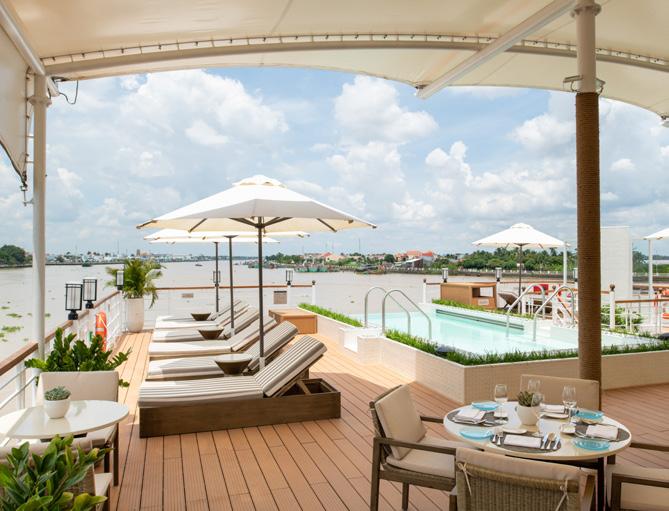
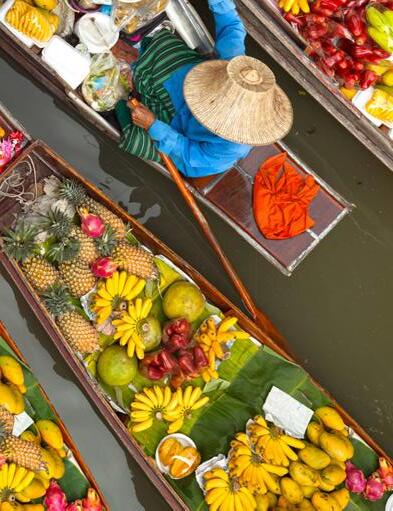

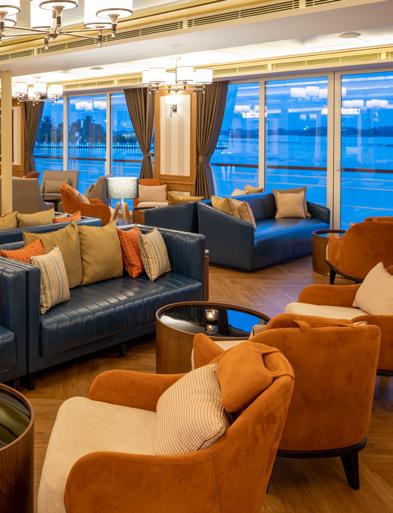
Early morning food markets prove a perfect window onto local life. Trailing through narrow lanes crammed with piles of fragrant herbs and chillies, and sloshing tubs of wriggling fresh fish and little river prawns, we rub shoulders with women shopping for dinner (and bargaining furiously). Everything is freshly picked or caught, the notion of food miles redundant. The most picturesque market is in Cambodia’s Kampong Cham, a sleepy town of broad streets and faded French colonial buildings that feels a bit like a film set. In the riverfront market, buckets of lotus flowers sit beside buckets of frogs, one of the region’s delicacies. Our lovely onboard program director Lee delights in our squeamish groans as he demonstrates how to approach another delicacy, duck egg embryos. We pass on the snakes.
Back on board the food is pleasingly reptile-free and we look forward to every meal, wonderful dinners in the handsome dining room and lunches where lighter options (salads and excellent soups) help us to maintain a fighting weight, countering the 6am pastries delivered to the tea and coffee station daily. The top deck bar becomes our favourite dining haunt, for early morning omelettes and strong Vietnamese coffee and then again before dinner for a French rose while watching the sun set through a misty miasma of pink and gold.
In Phnom Penh, Viking assembles a posse of savvy auto rickshaw drivers, making it easy to leave the group for a little solo exploration; lunch at the grand Raffles Hotel Le Royal is fun (try the yellow curry mussels) or a drink in the famous Elephant Bar where the Femme Fatale (champagne, cognac, Crème a la Fraise de Bois) was created for Jackie Kennedy in 1967. The newly hip Russian Market district (Toul Tom

Poung) is home to several cool restaurants and bars including the Sundown Social Club (think retro Miami) overlooking the market rooftops.
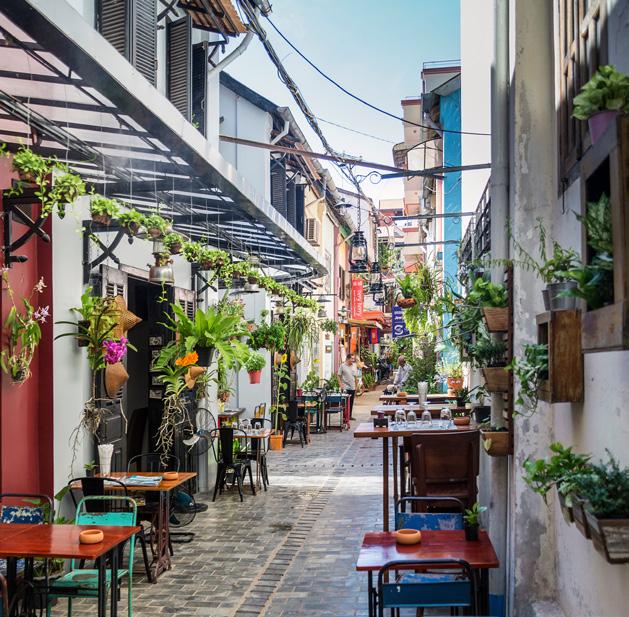
In lovely Siem Reap, Mahob offers a contemporary take on traditional Khmer cuisine while sister restaurant Lum Orng (on the outskirts of town) specialises in farm to table menus. Remember to stock up on fruity Kampot pepper, the finest in the world, and try some fried crickets (KFC Lee calls them), an important bulwark against starvation during the horrific rule of the Khmer Rouge. You might even spot edible birds nest on menus (the countryside is dotted with huge pigeonniers or nesting houses for the swiftlets).

All Viking Saigon itineraries begin or end in Hanoi, a street food mecca. Every pavement is dotted with little braziers, and the scent of sizzling food is as much a part of Hanoi street life as the frenetic buzz of mopeds and motorbikes. Be sure to try the pho and banh mi. I love banh duc nong (tapioca flour with a pork mince gravy and loads of coriander). And look for banh ran, made from glutinous rice, mung bean puree, fresh coconut and cane sugar, with the texture of a chewy doughnut.
We end our Viking voyage as we began, with a memorable meal, this time in Hanoi’s Old Quarter. At Chapter Dining and Grill where chef Truong Quang Dung presents incredible food (have the suckling pig) in elegant rooms that more closely resemble an art gallery. Almost everything is cooked over a state-of-the-art flame grill, celebrating the city’s cooking traditions in a nation as obsessed with food as your average river boat cruise passenger!
Clockwise: Siem Reap, Cambodia; Phnom Penh, Cambodia; Viking Saigon Sky Bar mealHanoi to Ho Chi Minh City or vice versa
15 DAYS | 2 COUNTRIES | 16 GUIDED TOURS | SET SAIL: JAN–MAR & JUL–DEC 2024; 2025
Discover intriguing cultures, silk towns, fishing villages, monasteries and local river life. Includes 7 hotel nights bookending your 8-day cruise.
From $7,295pp in French Balcony | From $8,795pp in Veranda Stateroom
SAVE up to $2,000 per couple

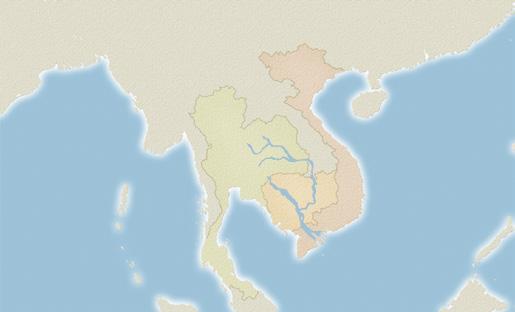
Bangkok to Hong Kong or vice versa
15 DAYS | 4 COUNTRIES | 6 GUIDED TOURS | SET SAIL: MAR, OCT 2024; APR 2025 Immerse yourself in the cultural tapestry of four Southeast Asian countries on one sweeping journey. Overnight stays in five ports let you pull back the veil of Indochina and connect with locals.
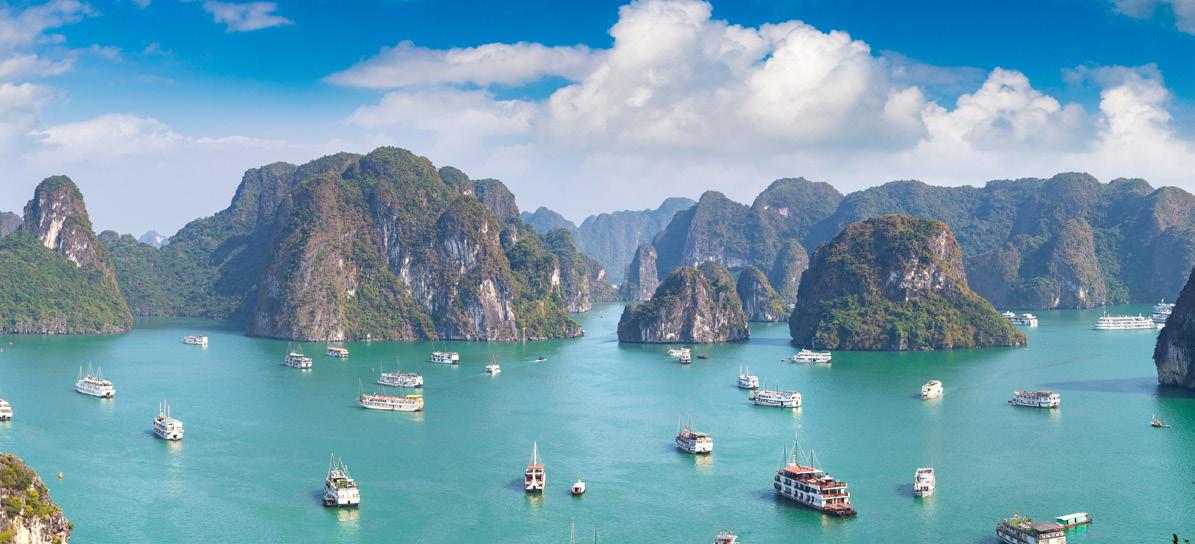
From $10,995pp in Veranda Stateroom
INCLUDES $2,500 flight credit per couple – quote OC12 when booking
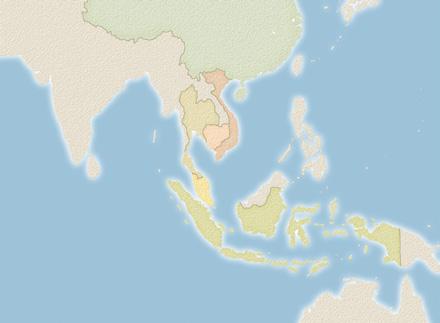
Hong Kong to Bali or vice versa
27 DAYS | 7 COUNTRIES | 11 GUIDED TOURS | SET SAIL: MAR, OCT 2024; APR 2025
Get to know some of the world’s most vibrant cultures, meeting those who call them home, exploring the deeply spiritual cultures of Indonesia and the richly historic nations of Vietnam and China.
From $19,095pp in Veranda Stateroom | SAVE up to $1,600 per couple
INCLUDES $2,500 flight credit per couple – quote OC12 when booking
advertised discounts, and are correct at the time of printing. A partially refundable deposit is required at the
include
booking. Magnificent Mekong based on 11 August 2025 departure. Southeast Asia & Hong Kong based on 18 April 2025 departure. Southeast Asia based on 06 April 2025 departure. Included flight credits are to be used towards flights booked by Viking and from major gateway cities in Australia and New Zealand. Should the applicable airfare be higher than the value of the Included Flight Credit, guests are required to pay the difference. Any unused
any other portion of the booking or any other person. Flights are subject to availability. Flight offers only valid if booked in conjunction with selected Viking Ocean cruises.
Ocean Cruise bookings made online, please enter offer code OC12 to obtain the $2,500 flight credit per couple. All offers only valid on new bookings made between 01 September and 30 November 2023 unless sold out prior. For full terms and conditions including flexible deposit policy and flight credit offers visit viking.com.
Embark on a tantalising journey along the rivers of the world, where food and wine become your passport to discovery. Immerse yourself in the local flavours, savouring the sweet and savoury, indulging in delightful chocolates, and sampling cheeses that tell tales of tradition.
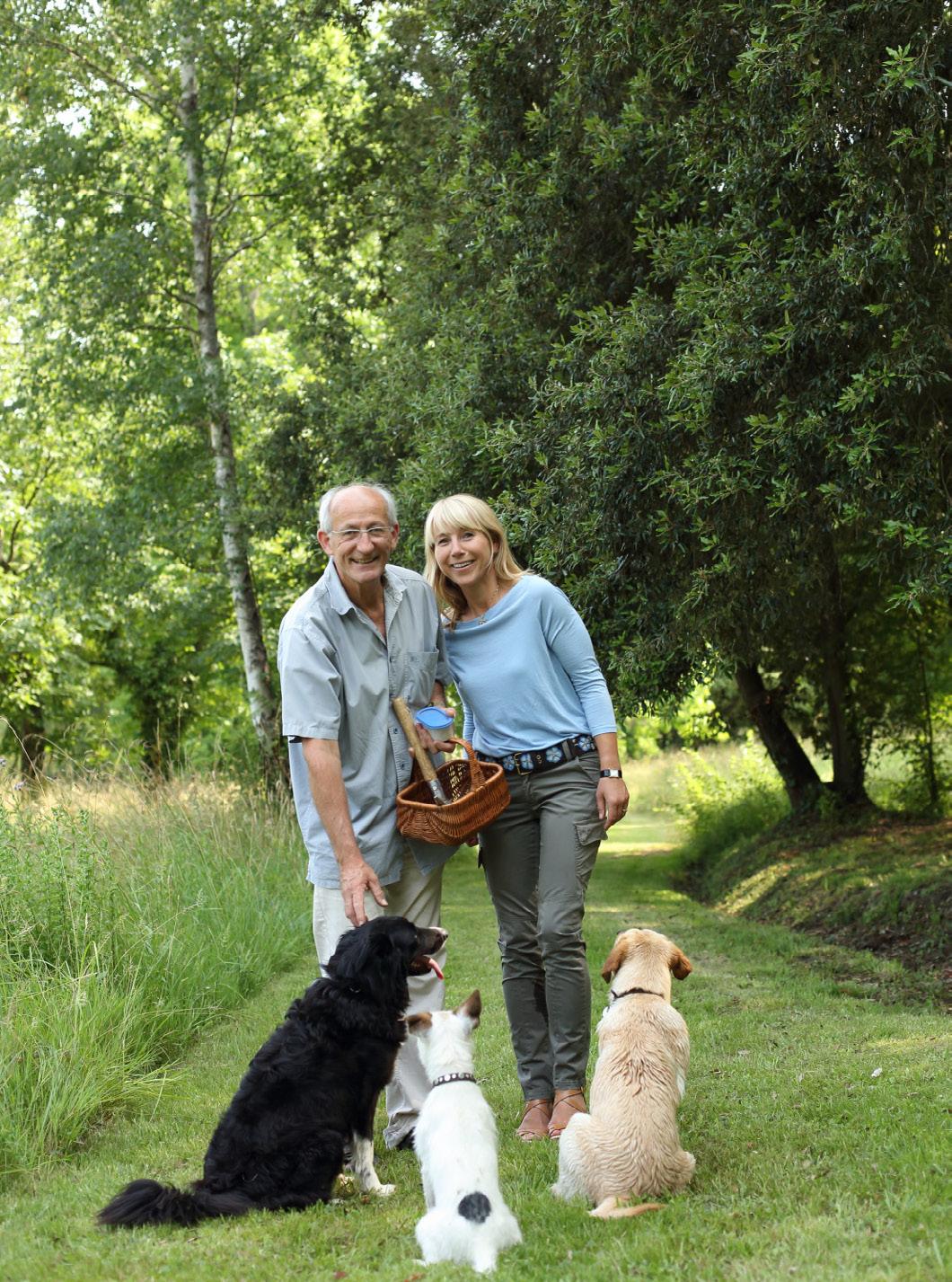 Truffle Hunting
Truffle Hunting
One of our most popular and highest-rated culinary experiences, embark on a delectable journey through the heart of the Alsace region of France. Begin with a shopping excursion through the charming streets of Strasbourg, meeting local food merchants who will introduce you to a plethora of Alsatian and French flavours. Sample the exquisite taste of fine chocolates, pralines, and the iconic kougelhopf cake. Relish the buttery layers of croissants and the irresistible aroma of freshly made baguettes. Indulge in a variety of cheeses, some with centuries-old traditions and savour the unique flavours of special regional meats and sausages. Next a professional sommelier imparts their expertise on the art of pairing local foods with Alsatian and French wines. Learn how the flavours of the region's wines perfectly complement its diverse cuisine. Then, immerse yourself in the cosy ambiance of a typical winstub eatery, where a resident chef will guide you in crafting the iconic flammkuchen, a mouthwatering Alsatian specialty.
Experience on our 15-day Lyon, Provence & the Rhineland voyage from Amsterdam to Avignon or vice versa.
Melk, Austria
Embark on a captivating journey into the heart of Austria's renowned white wine culture, where history and exquisite vintages converge to create an unforgettable experience. Your excursion starts with a tour and tasting at a local winery, a cherished institution in the picturesque Wachau wine region. Despite comprising a mere three percent of Austrian wine production, Wachau stands as an unparalleled champion in Central Europe for its exceptional white wines. Drive into the Wachau Valley, whose unique combination of terraced slopes, dry stone walls, and centuries-old castles has earned it a place as a UNESCO World Heritage
Site. Wine cultivation has flourished here since the days of the Celts, long before the Roman Empire introduced the renowned Riesling grape. Delve into the intricate art of how this region's grapes capture the essence of their soil and explore impressive cellars steeped in history and tradition, before partaking in tastings of wines. This excursion offers a captivating glimpse into a prolific viticultural legacy beloved by oenophiles around the globe.
Experience on our 15-day Grand European voyage from Amsterdam to Budapest or vice versa.
In this full-day excursion on the outskirts of Saint-Émillion, learn about the art of truffle hunting, an age-old tradition steeped in mystery and culinary excellence. The exquisite delicacy of truffles, known for their robust aroma and earthy flavour, can only be found beneath the soil in select regions of France, making the partnership between humans and specially trained truffle-hunting dogs an essential aspect of the hunt. Enjoy an afternoon at a local truffle farmer's house and meet his truffle dog. These dogs possess an innate ability to detect the scent of truffles, buried deep within the forest floor, and are driven by an unwavering determination to unearth these precious fungi. You’ll be enlightened about the rare, elusive black Périgord truffle – a true jewel of gastronomy before you head for lunch to enjoy this delicacy.
Experience on our 8-day Châteaux, Rivers and Wine voyage roundtrip from Bordeaux.
Novi Sad, Serbia
Embark on a journey into the heart of Serbian culinary tradition, where the history of strudel comes to life. Venture to Brkin Salaš, a picturesque Serbian farm nestled in a charming
village near Novi Sad where you'll be greeted by a talented chef in a traditional kitchen. Immerse yourself in the history of strudel as you watch a captivating demonstration of this beloved baked delight. Delve deeper into the culinary heritage of Serbia as you discover the art of making traditional ajvar, a roasted red pepper sauce, or sauerkraut, depending on the season. These age-old recipes have been passed down through generations, preserving Serbia's flavourful past. With its crispy layers and a minced poppy seed filling, this delightful treat encapsulates the essence of Serbian tradition. As you relish every bite, you'll carry with you not only the knowledge of strudel's history but also the flavours and warmth of Serbian hospitality.
Experience on our 17-day Capitals of Eastern Europe voyage from Vienna to Bucharest or vice versa.
Budapest, Hungary
Embark on an enchanting journey through Budapest's vibrant Grand Market Hall, a historic marvel erected in the late 19th century. This sprawling three-story marketplace boasts a neo-Gothic facade that beckons you to explore its treasures. Guided by your expert guide, acquaint yourself with the expansive market's layout as you meander through its labyrinthine stalls. At every turn, you'll encounter a diverse array of vendors showcasing Hungarian delights. On the ground floor, farm-fresh produce mingles with an enticing array of pastries, candies, spices, and spirits. Ascend to the second floor to discover cosy eateries and unique souvenirs, offering a taste of Hungary's rich culinary heritage. For a glimpse into the daily life of locals, descend to the basement, where butchers and fish vendors ply their trade.
Experience on our 23-day European Sojourn voyage from Amsterdam to Bucharest or vice versa.
Clockwise, from top left: Chocolate tasting in Strasbourg, France; Vineyard in Wachau Valley; Gingerbread house decorating; Grand Market Hall in Budapest, Hungary; Strudel making in Serbia; Baker from Favaios in Douro Valley, Portugal; Cheese sampling in Lyon, France; Sampling beer in Cologne, Germany

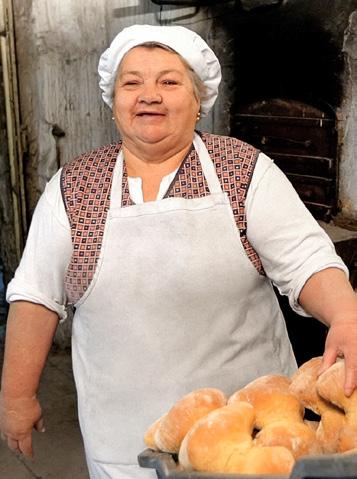

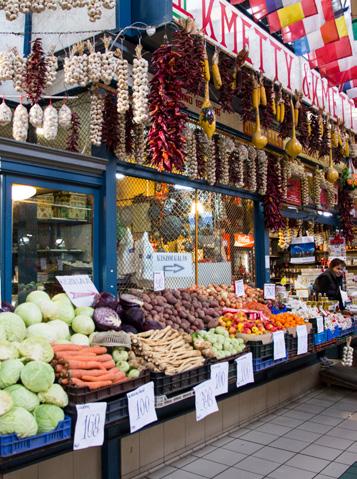




Journey to the quaint village of Favaios, a hidden gem nestled within the Douro Valley, where ancient traditions come to life at one of the region's last remaining traditional bakeries. In this charming village, bakers have preserved the age-old practice of breadmaking, using wood-fired ovens and the seasoned wood of grapevines. The aroma of freshly baked bread will envelop your senses as you witness this culinary artistry in action. Sample the bread straight from the oven, its warm and rustic flavour a testament to the heritage of this village, then visit the local museum dedicated to the intertwined histories of wine and bread in Favaios. Next, your journey leads you to Quinta da Avessada, an exquisite wine-growing estate with a century-old legacy at the heart of the Douro wine region, celebrated as a UNESCO World Heritage Site. Here, you'll encounter the passionate vintners who tend to the vines, gain insight into the winemaking process with a tour of the atmospheric cellars, and savour the unique flavours of local port varieties in the rustic tasting room.
Experience on our 10-day Portugal’s River of Gold voyage from Lisbon to Porto.
Lyon, France
Indulge in the rich culinary traditions of Lyon, a city once revered as the "world capital of gastronomy."
Celebrate Lyon's storied food culture, guided by an expert who will unveil the secrets behind its culinary heritage. Begin with a delectable taste of Brioche à la Praline, a sumptuous treat made with pure butter and generously filled with crushed pralines. It's a delightful introduction to Lyon's sweet side, showcasing the city's love affair with confectionery. Next, visit a renowned chocolatier, where you'll have the pleasure of sampling an array of carefully handpicked chocolate delights. Then
dive into the world of cheese, learn about the intricate process of cheese maturation and sample a variety of local favourites, expertly paired with a glass of fine wine. Lyon's cheese culture is deeply ingrained in its culinary identity, and this tasting offers a glimpse into the regional diversity and flavours that have captivated palates for generations. Continue to a traditional bistro, where you'll relish a platter of cured meats, pâté croute, terrine, and grattons—a local delicacy crafted from pork rind. Each bite on this journey tells a story of Lyon's gastronomic legacy and culinary traditions.
Experience on our 8-day Lyon and Provence voyage from Lyon to Avignon or vice versa.
Caudebec-en-Caux, France
Step back in time and experience the enchantment of Christmas baking like never before in the illustrious 850-year-old Abbaye du Valasse. This exceptional culinary journey invites you to embrace the spirit of the season as you join a local chef to create your very own yuletide treats. Under the magnificent Cistercian vaults of the abbey, within the hallowed walls of the old monks' refectory, you will embark on a fascinating journey into the heart of gingerbread making. Guided by a local baker, you'll follow a time-honoured recipe that has been passed down through generations. Gingerbread, with its rich history and significance, holds a special place in Christmas traditions around the world. Its spicy, comforting aroma, especially during the holiday season, evokes a sense of nostalgia and joy, making it a cherished treat for generations. Take a moment to admire the unique setting of the 12th-century Romanesque abbey as you enjoy your warm cookies with a cup of coffee or tea.
Experience on our 8-day Christmas on the Seine voyage roundtrip from Paris.
Cologne, Germany
Delve deep into Cologne's vibrant beer culture and uncover its fascinating history on this immersive excursion. Venture into the heart of Cologne, meandering along cobblestone streets in the charming Old Town, passing by historic houses that echo with tales of the city's past. But it's the beer culture that takes centre stage here. Cologne's pride and joy, Kölsch, a light and crisp beer, can only be found within the city's borders. At three traditional Kölsch brewhouses, you'll experience this local treasure firsthand. The friendly and knowledgeable Brauhaus servers, affectionately known as "köbes," will serve you Kölsch straight from the barrel in 7-ounce glasses—a size designed to ensure the beer remains refreshingly cold until the last drop. You'll not only savour the flavours of Kölsch but also uncover the brewing "secrets" that contribute to its distinctive character. Following your beer-filled adventure, cap off your evening with dinner at a popular local brauhaus, where you can relish traditional Cologne cuisine.
Experience on our 8-day Rhine Getaway voyage from Amsterdam to Basel or vice versa.
A great joy in travel lies in sampling the local fare and learning about the culinary traditions and heritage for which a country is known. For those with a sweet tooth, these are the most iconic desserts you shouldn’t miss when you visit these incredible destinations.
It does not get any more French than an éclair. You cannot walk into a patisserie in France without seeing a lineup of these elegant pastry fingers. Believed to be invented by Marie-Antoine Carême, a famous French chef in the 19th century, the traditional éclair consists of a crispy choux bun exterior that is glazed with a shiny chocolate ganache and filled with a heavenly vanilla or chocolate pastry cream. Today you are spoiled with multiple variations, colours and flavour combinations to choose from.
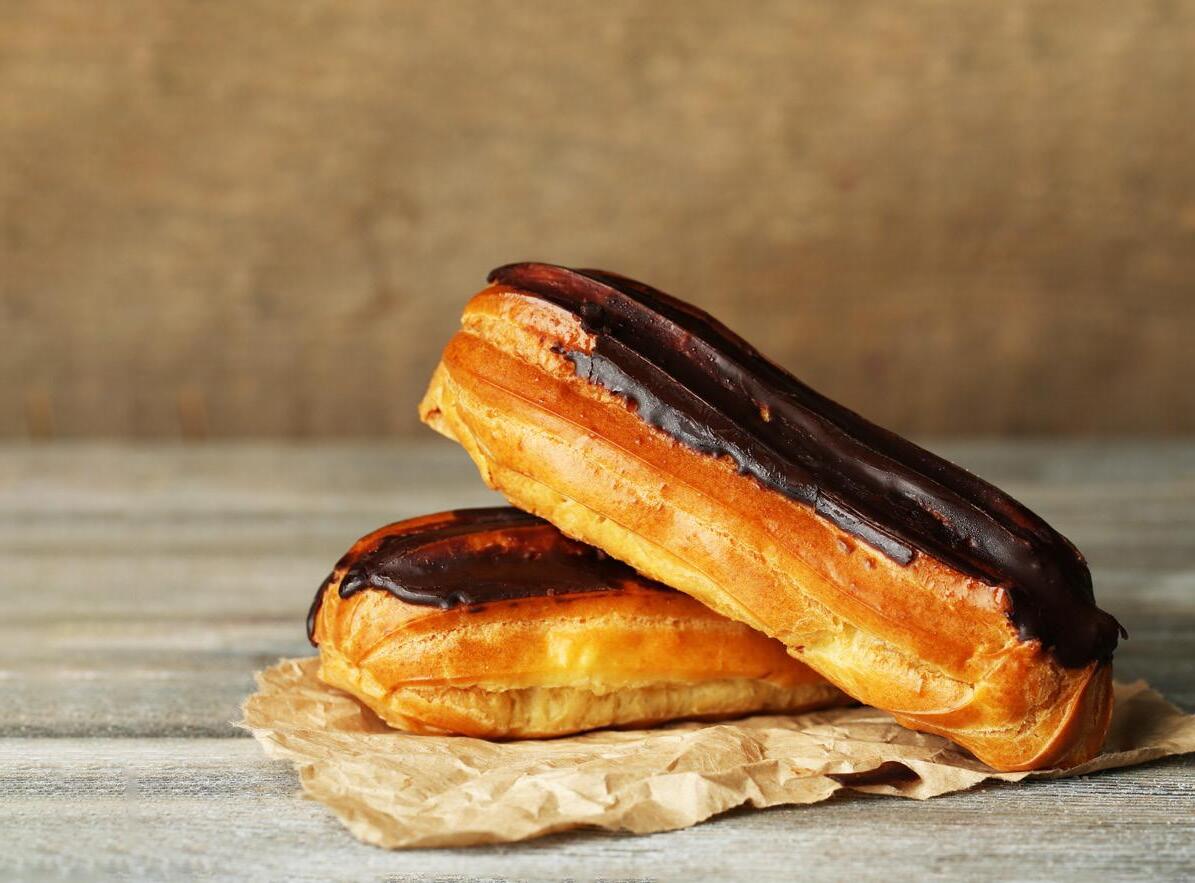

This delectable Viennese classic was the delightful consequence of a lucky twist of fate. In 1832, apprentice chef Franz Sacher was tasked with creating a dessert for Prince Klemens Wenzel von Metternich when the chef fell ill. The result — a decadent layered chocolate sponge cake with a thin spread of apricot jam between the layers coated in dark chocolate icing. Enjoy a slice at Hotel Sacher or the many other coffeehouses when you visit Vienna.
While readily available throughout the world, this icy treat just tastes better when devoured in Italy and makes the perfect sightseeing companion. Due to a lower milkfat content, a slower churning process, and a warmer serving temperature than other ice creams, gelato is softer, creamier, and has a denser texture with more concentrated flavours. Sample popular flavours like chocolate, pistachio, hazelnut, and lemon or consider trying the original gelato flavours - fior di latte (milk) or crema Fiorentina made with honey, citrus and amaretti cookies.
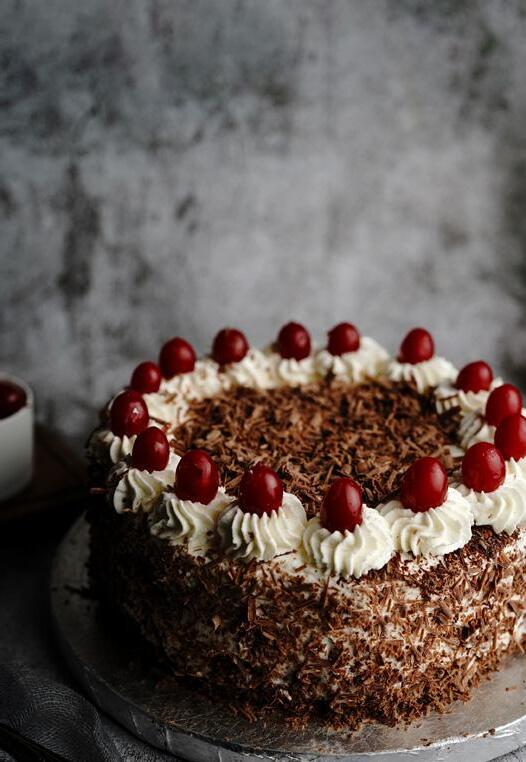
GERMANY
No journey into Germany’s fairytale Black Forest is complete without enjoying a generous slice of the region’s namesake dessert, Schwarzwälder Kirschtorte or Black Forest Gâteau. This extravagant cake is constructed with several layers of chocolate sponge cake doused with kirsch (cherry-flavoured brandy), sandwiched with whipped cream and kirsch-soaked cherries before being lavishly decorated with more cream, cherries and a dusting of chocolate shavings.
This lip-smacking sweet dessert consists of dozens of delicate layers of phyllo pastry filled with chopped walnuts or pistachios and doused in sweet honeyed syrup. Baklava's origins trace back to the Ottoman Empire — which includes present-day Turkey — but you will find Baklava in pastry stores all across the Mediterranean and the Middle East and in numerous shapes and sizes from diamond shapes to pistachio wraps rolled into cigar-sized rolls.
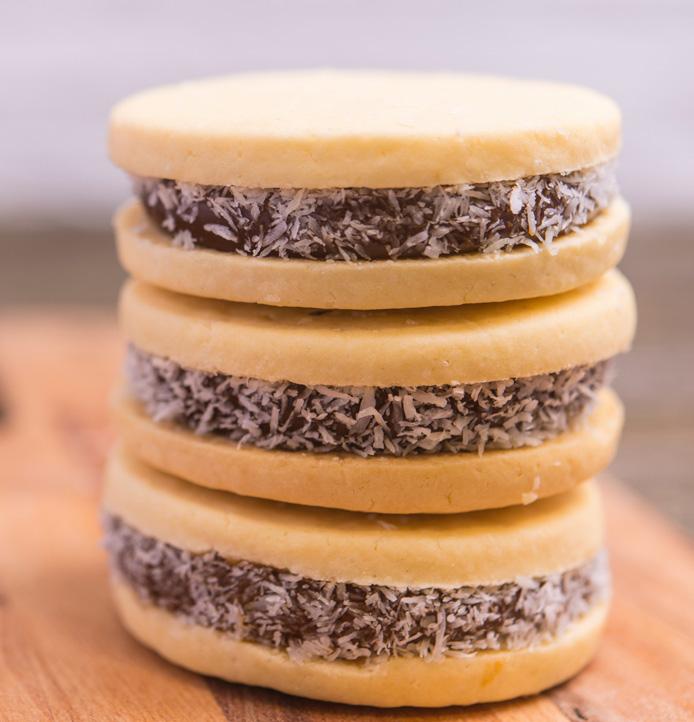
This sweet snack is made from a sandwich of two melt-in-the-mouth shortbread-like cookies filled with luscious dulche de leche (a caramel mixed with sweetened milk) and rolled in desiccated coconut. Another popular version is the chocolate alfajores, which is completely covered in chocolate. You will find this scrumptious treat in bakeries and confectionery stores not only in Argentina but in other Latin American countries too. While originally brought to South America by the Spaniards, each country has their own version of alfajores.
Pastéis de nata, or Portuguese egg tarts, are moreish treats made from flaky pastry shells filled with a creamy egg yolk custard flavoured with lemon zest and cinnamon. They are baked until set and caramelised before being dusted with more cinnamon and sugar. Created before the 18th century by monks at Jerónimos Monastery in Lisbon, you can buy these tarts all over Portugal. For the most authentic, visit Fábrica de Pastéis de Belém near the monastery, whose original owners bought the recipe from the monks back in 1837.
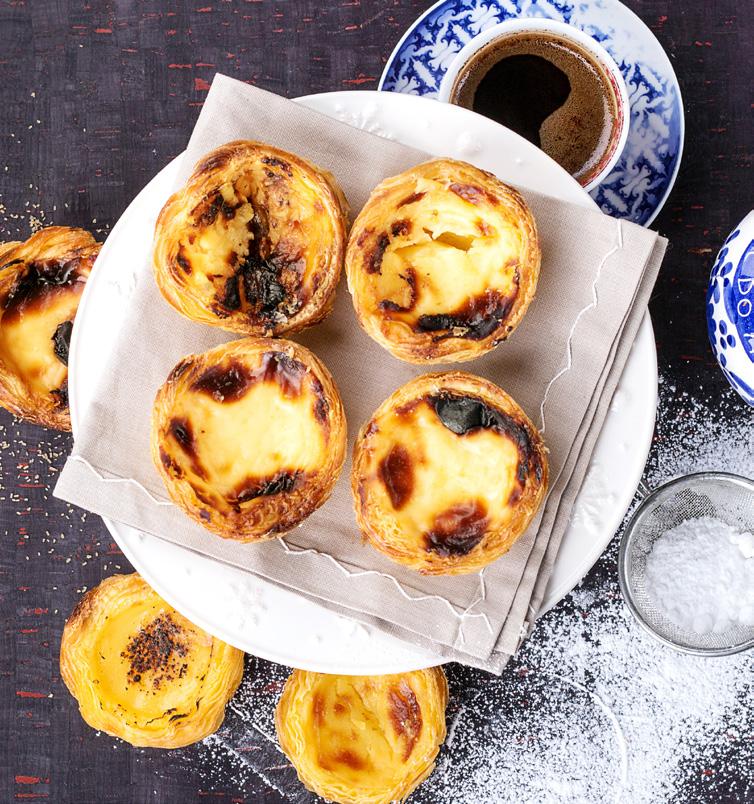
A traditional Norwegian version of a cinnamon roll, the Skillingsboller has been Bergen’s favourite pastry for over 500 years since it was first brought to Norway from Germany during the Hanseatic period. These soft cinnamon buns differ from other cinnamon rolls as the sweet yeast dough is flavoured with cardamom and instead of icing they are slathered in butter when hot and generously covered with sugar and cinnamon before being rolled into their circular scroll shape. While available in cafés and bakeries across Norway they are most often associated with the city of Bergen.

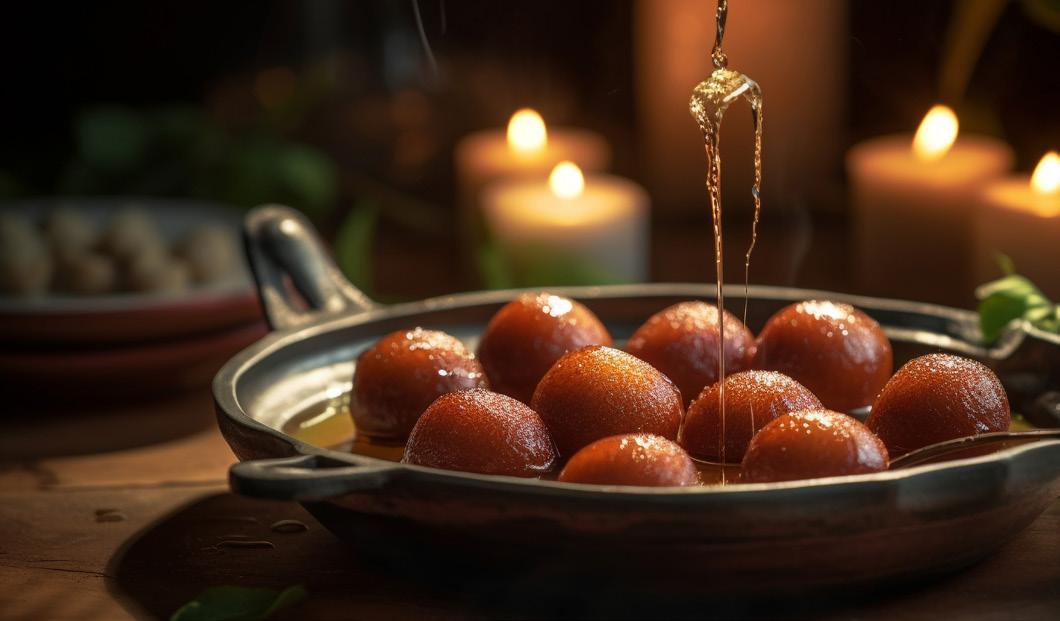
Often referred to as "Indian doughnuts," gulab jamun is a beloved Indian dessert eaten at celebrations and festivals, but you will find it on the menu at restaurants and in sweet shops in India. Originally a medieval Persian creation, this sweet dish of meltin-your-mouth fried round dumplings are made from a dough of milk solids, then deep-fried in oil or ghee before being bathed in a sugar syrup perfumed with cardamom, rose water and saffron or kewra.
UNITED STATES OF AMERICA
Hailed as southern America’s signature dessert, this nutty, treacle-soft pie consists of a thin pastry crust filled with a thick, silky caramel-flavoured custard, topped with chopped pecans. Growing along the banks of the Mississippi River, pecans were prominent in the diets of Native Americans living in the area more than 8,000 years ago. But it wasn’t until 1886, that the first recipe of the pie was published in an issue of Harper's Bazaar.
Viking's expedition ship offers the perfect blend of exploration and relaxation

WORDS CHRIS CALDICOTT
The appropriately named Hide is a hidden chamber of delights tucked away below the bow of Viking Octantis. When you eventually find it, a heavy metal riveted porthole door, opens onto a space more typical of a chic designer boutique hotel than an expedition ship. An internal structure of polished blonde wood, with leather chairs and fabric sofas, galvanised steal pillars and shoots through which the ships anchors plunge to the seabed, is fringed by rows of huge slanting sea level floor to exposed industrial ceiling windows with views over the bow waves. By day you can often have this peaceful place all to yourself to savour the immaculate pencil renditions of worn woollens by Norwegian artist Hanne Lydia Opøien Fiegenschou, part of the inspirational collection of curated art, photographs and sculpture exhibited throughout the ship. In the evening those in the know gather to listen to fireside tales of adventure, related by members of the onboard expedition team, with added attraction of a pop-up bar serving single malts and barrel-aged bourbons.
Viking Octantis is the first of two Viking expedition ships (the other Viking Polaris) principally designed with an optimum combination of size, stability and facilities for voyages to remote polar regions. I joined Viking Octantis in Barbados for the 10-day Caribbean leg of its journey from Antarctica to New York, via St.
Lucia, St. Kitts, St. Barts, Virgin Gorda, and Puerto Rico. The Hide is not the only treat waiting to be found on board. Follow the shiny marble floor on deck two to the Nordic Spa’s indoor therapy pool, past the Snow Grotto, experience shower, sauna and steam rooms to a door marked Badestamp. This opens onto a hot tub exposed to the elements from where you can watch a submarine launch. Yes, there are submarines on board! Two super high-tech yellow submarines, named John and George. Between taking guests on sub aquatic adventures they live in the Hanger. This industry first vast in-ship marina with hydraulic shell doors, high powered Zodiac RIBs, expedition kayaks and military style Special Operations Boats, launched via a 26 metre slipway, is straight out of a scene from a cinematic espionage caper.
Viking guests have the privilege of funding some serious on board scientific research projects in partnership with Cambridge University, the National Oceanic and Atmosphere Administration (NOAA) and the Norwegian Institute for Water Research. A ‘Ferry Box’ supplies continuous data about water sucked from the ocean and in a glass-enclosed mezzanine Science Lab passengers can join resident scientists analysing samples of seawater for micro plastics using state of the art Leica microscopes.



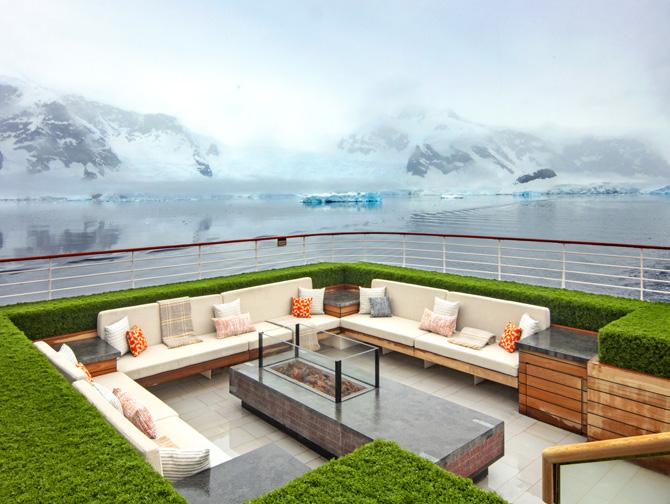

NOAA has sanctioned Viking Octantis as the first civilian ship launch station for biodegradable latex weather balloons filled with helium, capable of reaching a 29 kilometre altitude to transmit live wind, temperature and pressure data to the visualisation chart table linked to a wall screen in the ship’s Expedition Central.
Being invited to watch the launch was rare a opportunity to see deck seven, normally a crew only zone as is the aft section of deck six. Midships is another hidden gem few passengers seem to find, a sun deck area of stylish loungers, wicker chairs and comfy sofas. Between here and the Bridge are the lavish Owner’s Suite with its own private garden, and four elegant Explorer Suites.
All the suites and staterooms on Viking Octantis feature uniquely designed Nordic Balconies; floor-to-ceiling distortion-free glass with a top section that can be lowered to create a sheltered, al fresco lookout without compromising indoor space. All the suites and staterooms on Viking Octantis feature uniquely designed Nordic Balconies; floor-to-ceiling distortion-free glass with a top section that can be lowered to create a sheltered, al fresco lookout without compromising indoor space.
The pinnacle of Viking Octantis innovative design is the Aula at the stern of deck two; a stunning theatre auditorium featuring an ingenious retractable 4K laser screen lowered for daily
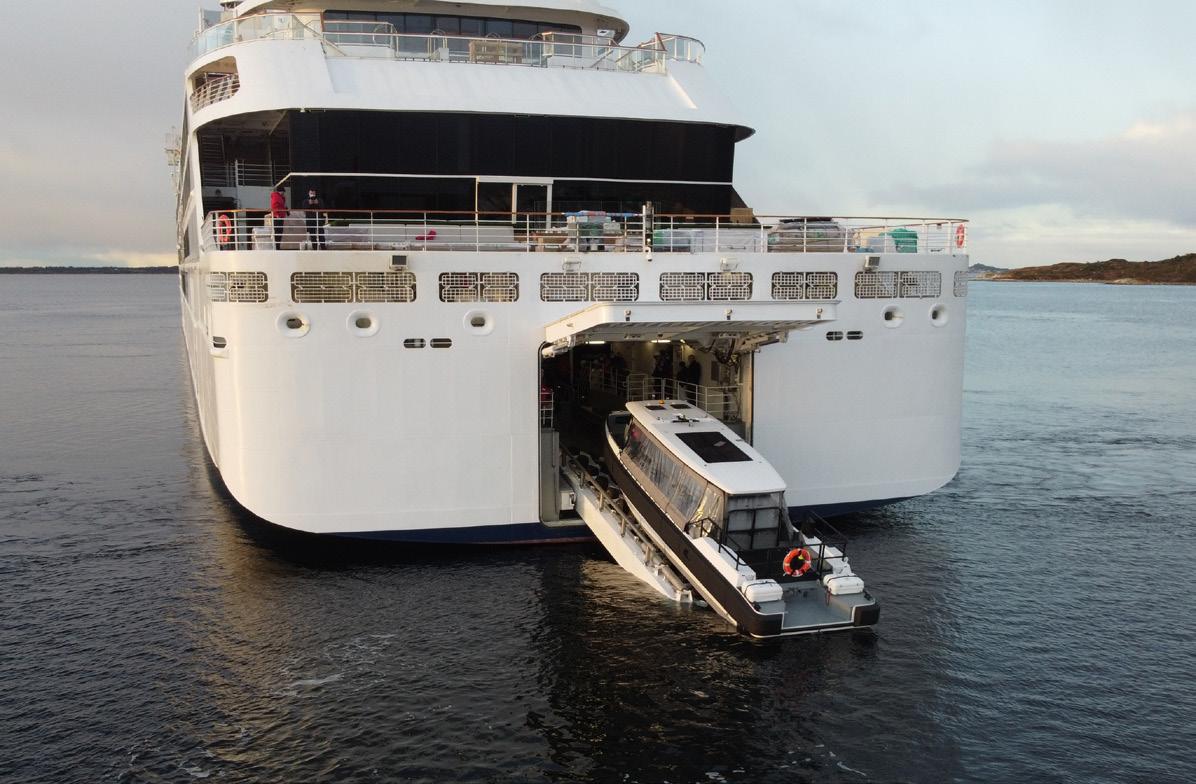
briefings, films and lectures and raised to reveal panoramic 270-degree views through double height windows. Outside is the most popular al fresco space on board the Finse Terrace with sunken sofas, named after a plateau in Norway and the owners family Karine Hagen's labrador whose paw prints are set in the floor tiles.
Anyone who has been on a Viking ocean ship will find familiar options for fine dining in the Restaurant, Italian classics in Manfredi’s, multi-cuisine from the open live kitchens of the World Cafe, the Grill and Sushi Bar and Mamsen’s serves traditional Norwegian Waffles and irresistible slices of suksessterte cake.
Deck five hosts a generously stocked library of expedition literature curated by London’s Heywood Hill bookshop, a spacious living room of sofas draped with reindeer throws, a bar and the upper level of the Explorers’ Lounge. A promenade deck encircles them from the trio of different temperature infinity pools outside the Aquavit Bar and terrace at the stern to a staircase that descends to the bow on deck three, making it possible for a 400 metre circumnavigation of the ship, a good start to any day at sea.
Join us on a Viking Expedition voyage to the Arctic, Antarctica or North America's Great Lakes.
Viking Octantis Special Ops Boat slipwayDining on board our Viking expedition ship, you will find the ideal setting for impeccable service and casual elegance with five dining options as well as 24-hour room service.
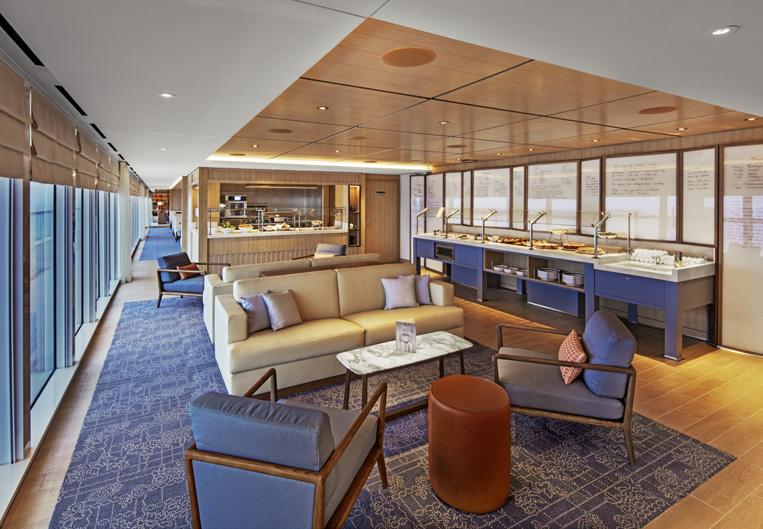
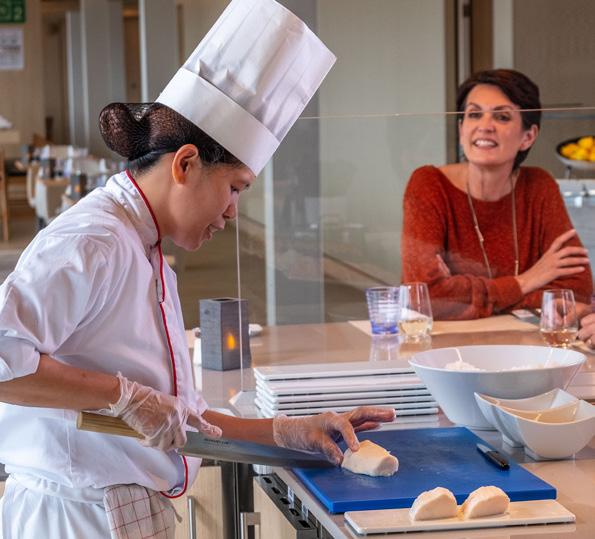
The expansive World Café with an open kitchen and live cooking provides a vibrant interactive experience with a wide range of international fare and menu offerings that change daily. Indulge in the premium seafood and sushi bar, enjoy steak or fish cooked to your liking from the Grill and the 24-hour bakery provides a variety of breads and pastries at any hour of the day.
Our elegant dining venue, The Restaurant, offers our ultimate dining experience. Serving regional dishes, Scandinavian specialties and always available classics served surrounded by sweeping exterior views.
Inspired by Italy’s beloved trattorias, Manfredi’s Italian Restaurant offers the best of Italian cuisine, from hearty Tuscan fare to Rome’s renowned dishes such as Spaghetti con Lardo di Colonnata, Bistecca Fiorentina and Tiramisu.
Offering Norwegian specialties including waffles according to Torstein’s mother's original recipe, open-faced sandwiches and split pea soup. On board our Expedition vessels, Mamsen’s has its own dedicated space and serves light fare throughout the day and into the evening.
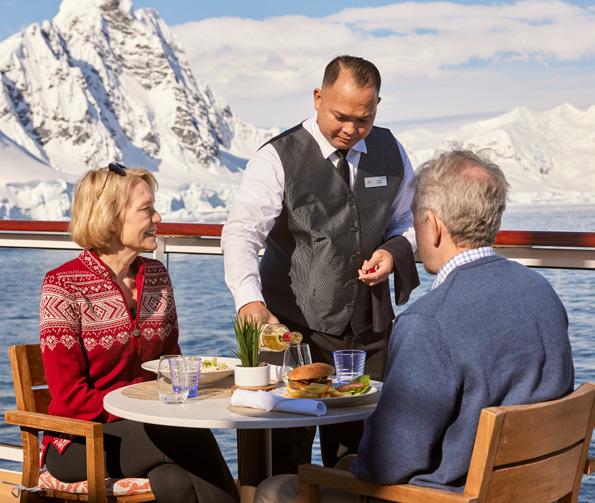
Al fresco dining and whale watching? Why not. Our ships offer the most al fresco dining on any waterway, so you can enjoy a meal or a glass of wine while surrounded by spectacular scenery.
From top: Sushi bar at World Café; Aquavit Terrace; Mamsen'sIf you have an overnight in Milwaukee ahead of your departure, head down to the historic Third Ward neighbourhood. Only 15 years ago, it wouldn’t have been a place to be after dark – there were just gloomy and abandoned factories and wharf buildings. Now it’s the place to be at night – and during the day, for that matter. We also loved the St. Paul Fish Company restaurant right near the Broadway entrance. You can sit down at a table, but we preferred to wait until a
place at the counter became free (it helps being a European, as Americans have their dinner early). As an Englishman, I know my fish and chips. These were amazing: crisp, fresh and maybe a hint of cajun. Only mistake: I had a glass of white wine. This is Milwaukee. It has to be beer.
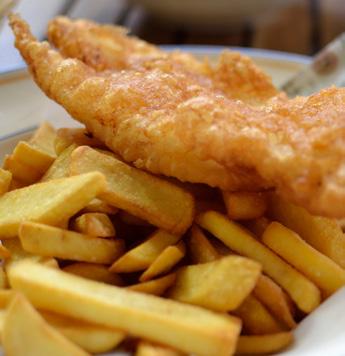
WORDS MARK JONES
On a cruise, you create a journey within a journey. As you sail along, you explore your immediate surroundings (the ship) and the wider environment (in our case, the Great Lakes of Michigan, Huron and Superior and the watery bits in between). You get to choose your favourite places on board and on your excursions. That’s a challenge when there is such a smorgasbord of experiences to choose from and so many wonderful corners where you can settle down. “Curated” is a frequently used word, but there is truthfully no better one to describe this ship, Viking Octantis, and this journey. You feel as if everything has been thought about, considered and chosen, from the door handles, to the art on the walls, the music in the public areas (send me those playlists, please!), the talks, the tuna on the sashimi plate and the Altano Branco Douro white on the wine list. Here are 10 very special places I found on this most enchanting of trips.

This is the spiritual core of Viking Octantis. Designer Richard Riveire says his team at Rottet Studio took inspiration from The Explorer’s Club in New York and artefacts from the Scott Polar Research Institute in Cambridge. The result is an immersive library of exploration and travel, with a superb and eclectic collection of books. After a lot of experimentation, we ultimately settled on a corner of the lounge close to our stateroom. Two simple, midcentury-style armchairs, one leather, one felt, on a rug that evokes both the tilework of Scandinavia and the first explorer maps. You’ll find it next to
Lene Charlotte Tangen’s mesmerising glass sculpture – like a mini iceberg frozen in space. In the spaces between the lounges, there are perhaps the most evocative and poignant expedition images ever recorded: Frank Hurley’s glass-plate photographs from Shackleton’s 1914 Antarctic adventure. Outside: slow waters, the still canopy of pines and birches drifted eternally on.
There are historic places on Mackinac (the fort) and picture-perfect hot spots (the arch). But my moment of joy was a bike ride along the shoreline, the pale limestone rocks of the beach bordered by wildflowers and grasses on one side and the Caribbean blue of the lake on the other. The 183 metre nature trail through the wetlands and shade of the tamarack trees is an escape back to a world before forts and cafés and shops. The -ac in Mackinac rhymes with ‘awe’; and here, you can see why.


A sunny table on deck outside the Aquavit lounge is a close runner-up, but in the end, our go-to table was halfway down on the starboard side: always light, just sociable enough and, crucially, close to the cinnamon buns they make every morning. North America outside – but with one bite, you’re in pure Scandinavia.
The special operations boats, charmingly called “SOBs”, do some serious science, equipped as they are with sonar. We careered around this part of Georgian Bay within Lake Huron. After being tilted at 45 degrees, we welcomed the respite as we quietly drifted past tiny islands where cormorants and herring gulls nest.
The onboard theatre is modelled on the venue for the Nobel Prize ceremony. What you don’t get in central Stockholm is an IMAX-quality view of the lakes and shoreline flowing by the window. It’s especially mesmeric as dusk falls. But the onboard scientists are equal to the task of keeping your attention. We learnt about isotopes and what they can teach us as well as chemical stratification and secular cooling, among plenty of other fascinating topics. It’s not at all surprising to say that the Aula was always packed.
The view from the cabin of the last cruise I took was a tiny water-level porthole on a Greek sailing boat. What a contrast here: a floor-to-ceiling distortion-free, panoramic window glass designed for “optimal cosy viewing”. Best of all you can open it to let in the gentle breezes and soft air of a Great Lakes summer. And the storage: seriously, you could bring enough gear for all the seasons and still have storage left. The whole ship is one big invitation to read; but I was as happy here in 4001 as anywhere. My suggestion: Michigan writer Jerry Dennis’ 2003 book, TheLivingGreatLakes Lots of history and a good sprinkling of adventure. But really, the onboard library is such a thing of temptation and joy it’s almost a shame to bring your own book.
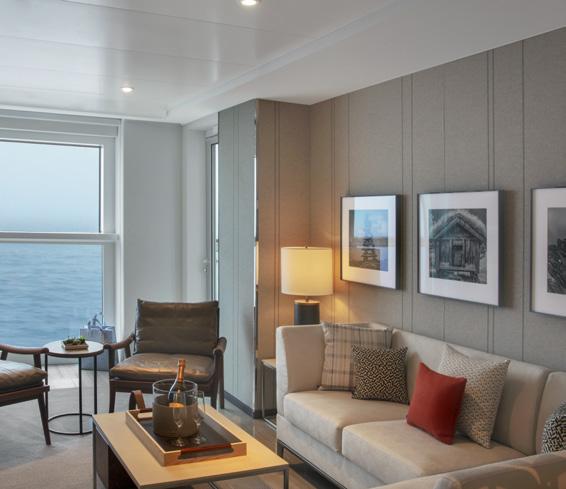
Viking Octantis has a Georgian Bay hike from the Canada House lodge where you alight for a good lunch of fried fish to the sound of ballads from a local folksinger. But I ventured out alone along the pine-thick shoreline. This was my first chance to set foot (and bottom) on Canadian shield rock. It is some of the oldest on the planet, melted and cooled and scoured and

compressed and tilted for over 4 billion years in some places. Today, the land around the Lakes is a low-lying landscape of flat rock and pine. The rock I sat upon was once buried kilometres deep beneath a mountain the height of Everest, long since eroded away. Not for the only time on the trip, geological time gives you vertigo.
The Hide takes a bit of finding. But as soon as I opened the door and realised I’d discovered one of my alltime favourite bars, the dead ends and wrong lifts all became worthwhile. I love good whisky and I love books and photographs of polar regions. This has all of them; and storytelling after dinner. The Hide is a special place on a warm Great Lakes evening. But to sit here after a long Antarctic day with the polar winds whistling outside? That would be a thing.
Those are a few of my Viking Octantis and Great Lakes places. But places are only half the story on a voyage like this. The people you meet and the stories you hear also get laid down in your memory banks to be retrieved and thought about in the years to come. Our new friends wanted to know why we’d chosen the Great Lakes Explorer. Well, (I said) I’m a travel writer who’s never less happy than on a tropical beach with nothing to do but fry, swim and drink cocktails: give me the mountains and the coolness any day. My wife, Annie, is a science teacher and a geologist who has a particular passion for Scandinavian design and food. “Sure looks like someone at Viking launched the ship with you in mind!” someone said. That was a very pleasant thought to take home.
John is a yellow submarine that travels inside the Viking hangar ready to do some serious science along with other subs in the fleet: Paul, George and Ringo. Our dive was just 18 metres to the floor of Lake Huron. As we touched down gently on the soft silt, it felt more like a moon landing than the phantasmagoric experience the Beatles had in their Yellow Submarine. But it was a first: another thing to tick off the list of 1500 things to do before you’re 90.

JAN–FEB
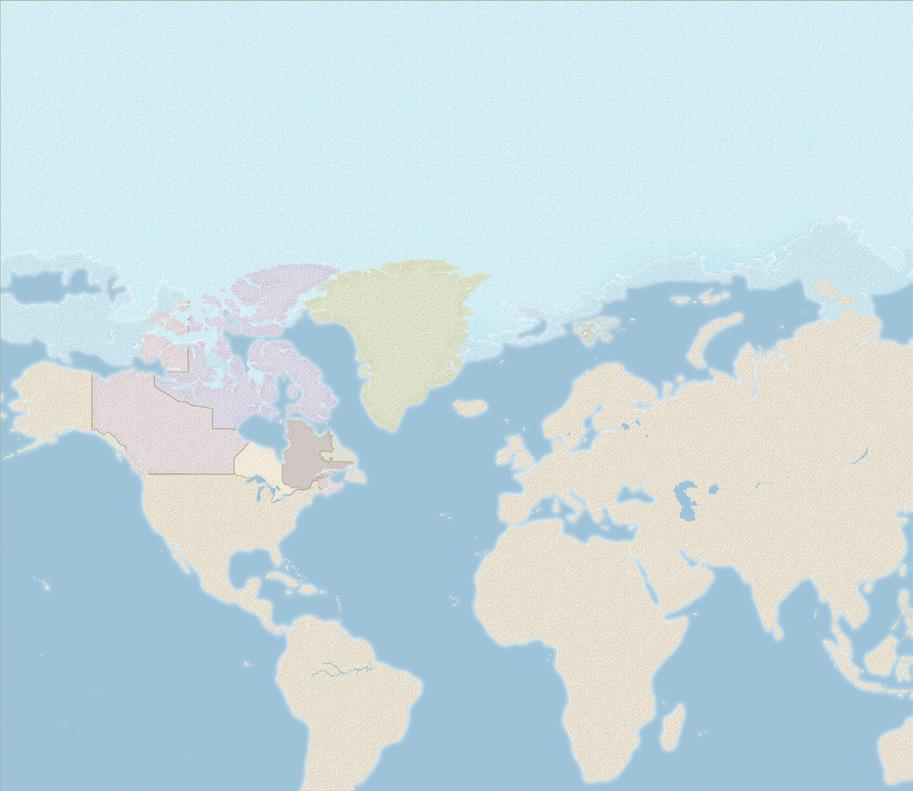
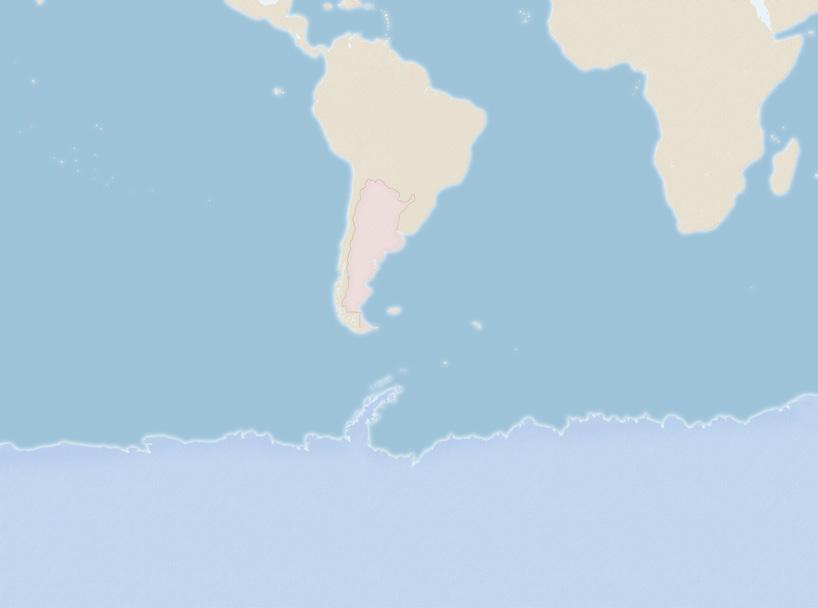

From
